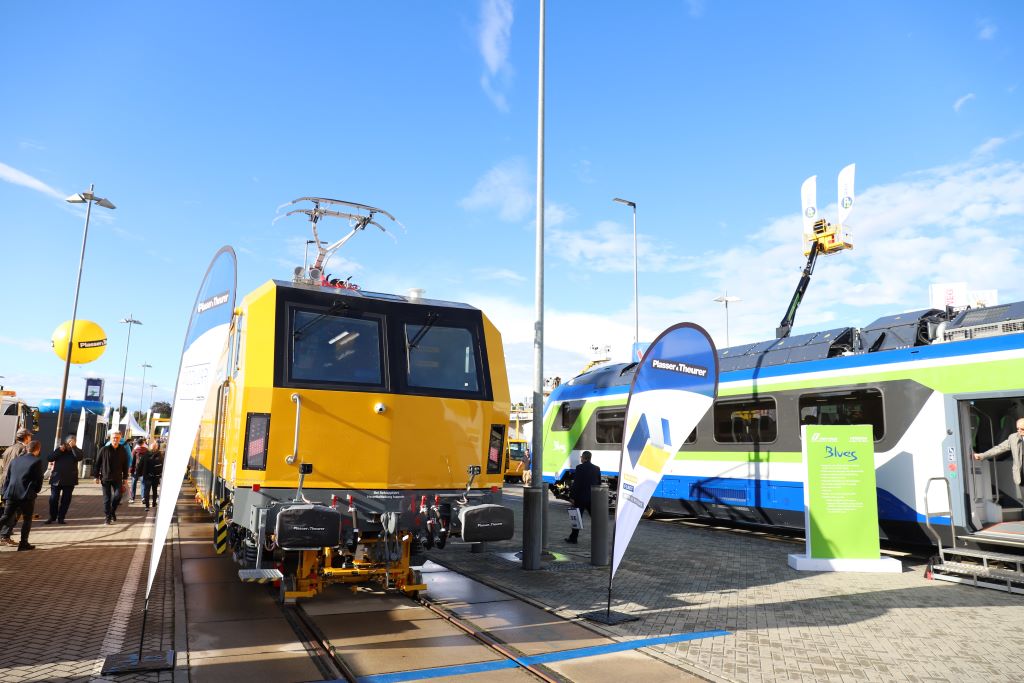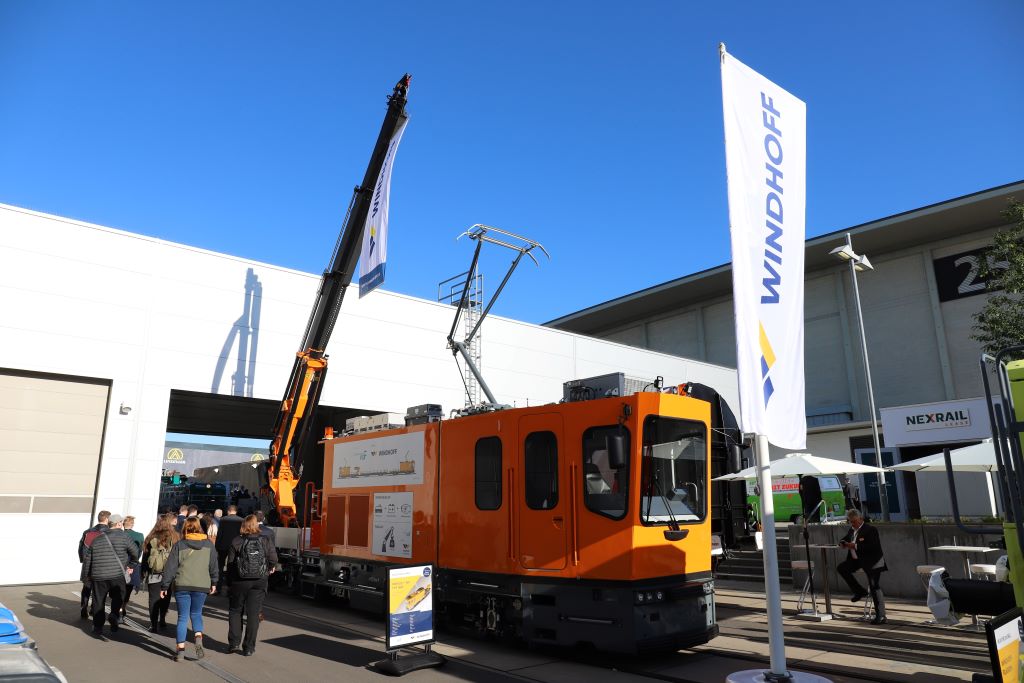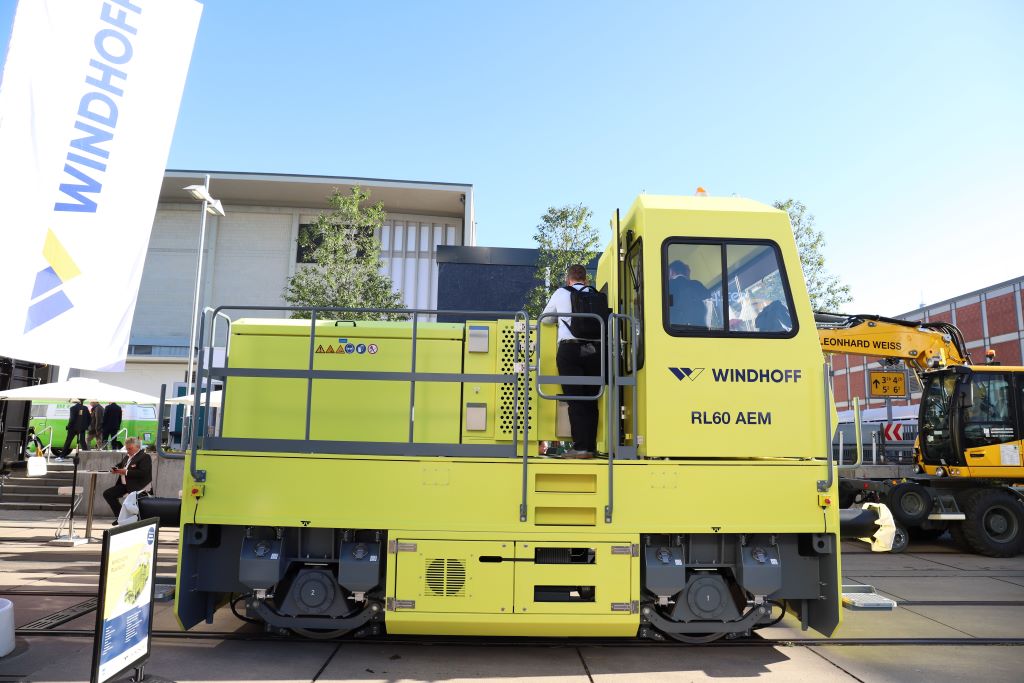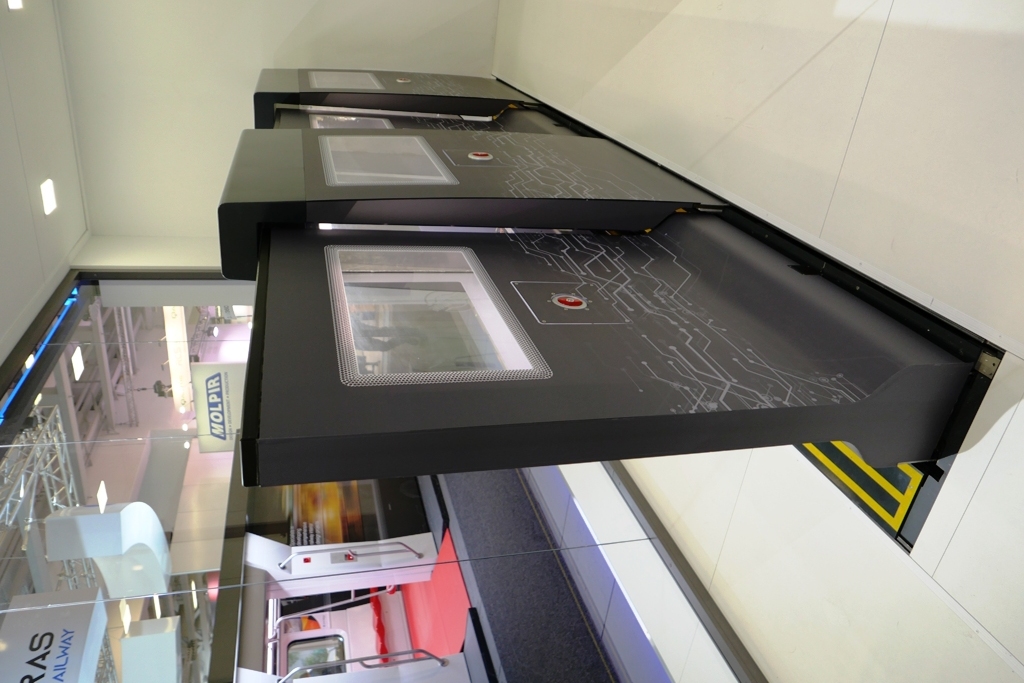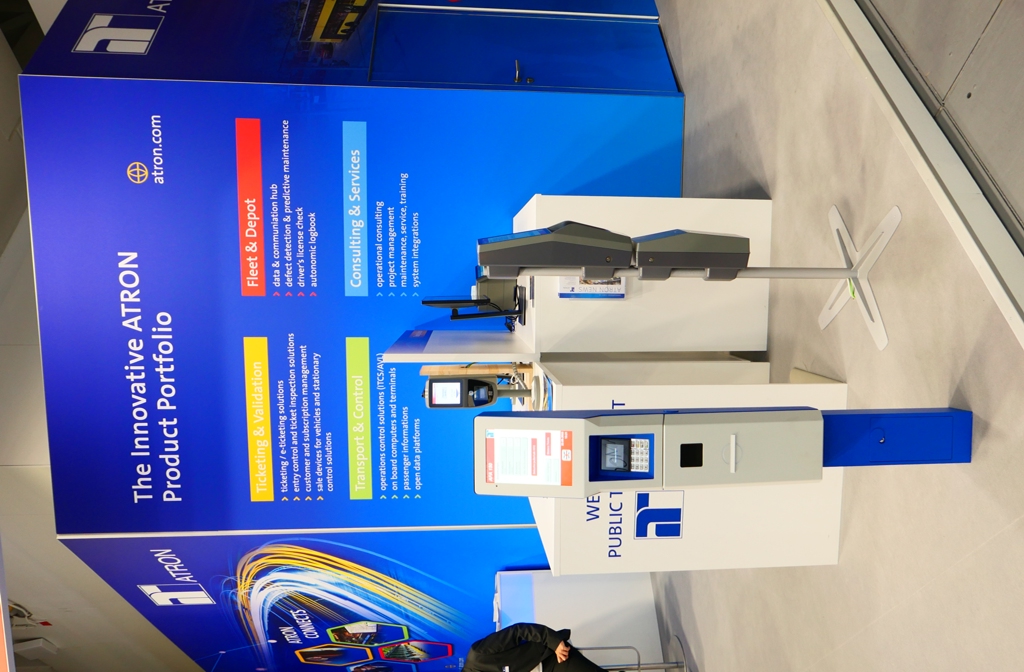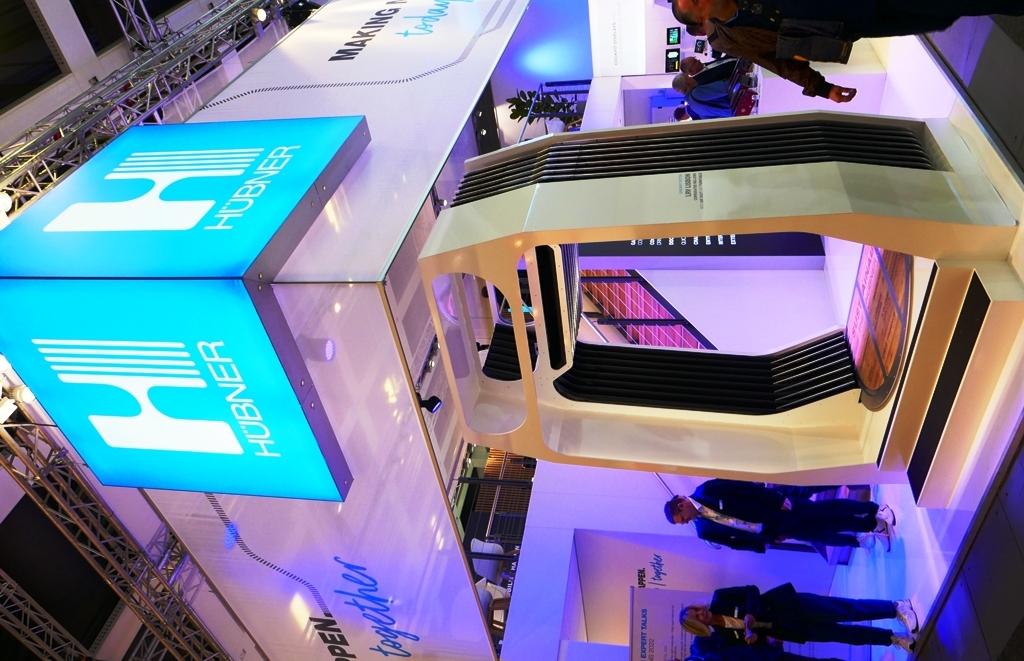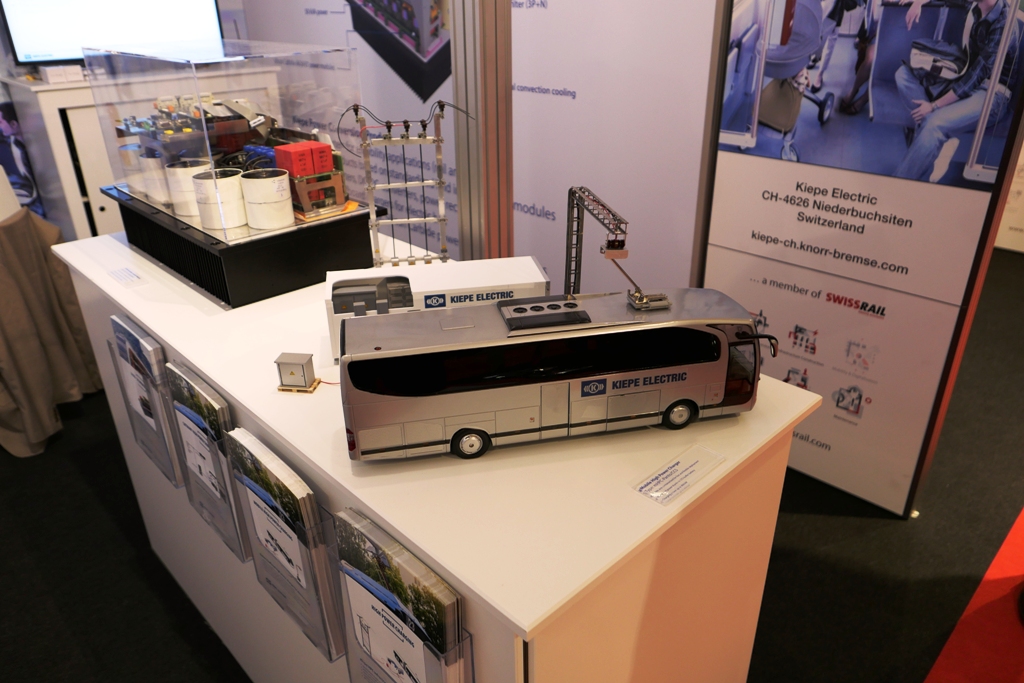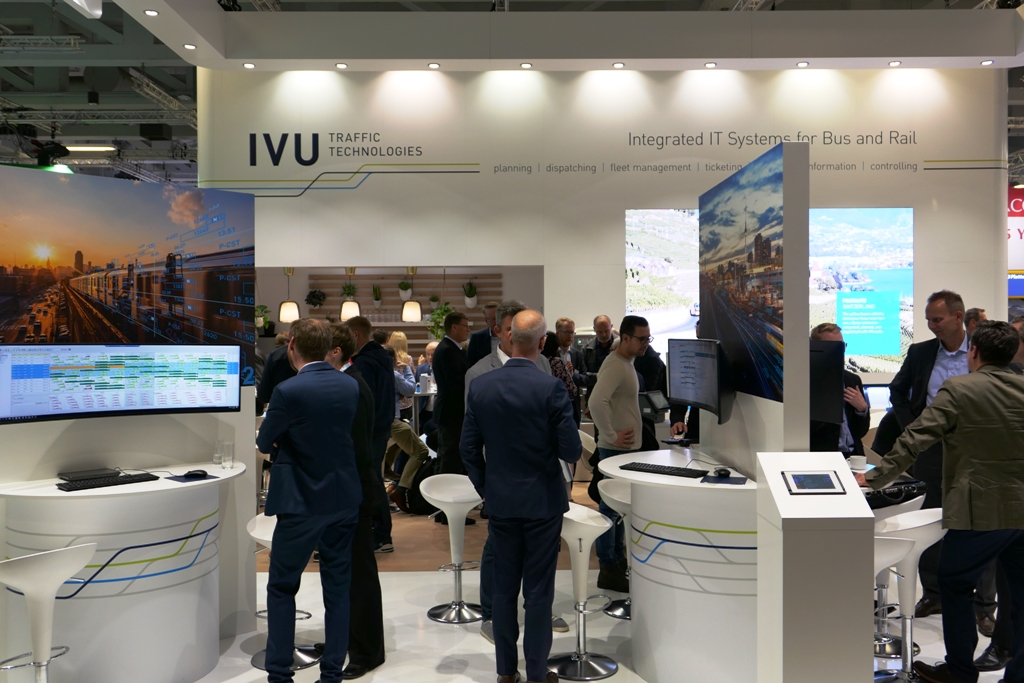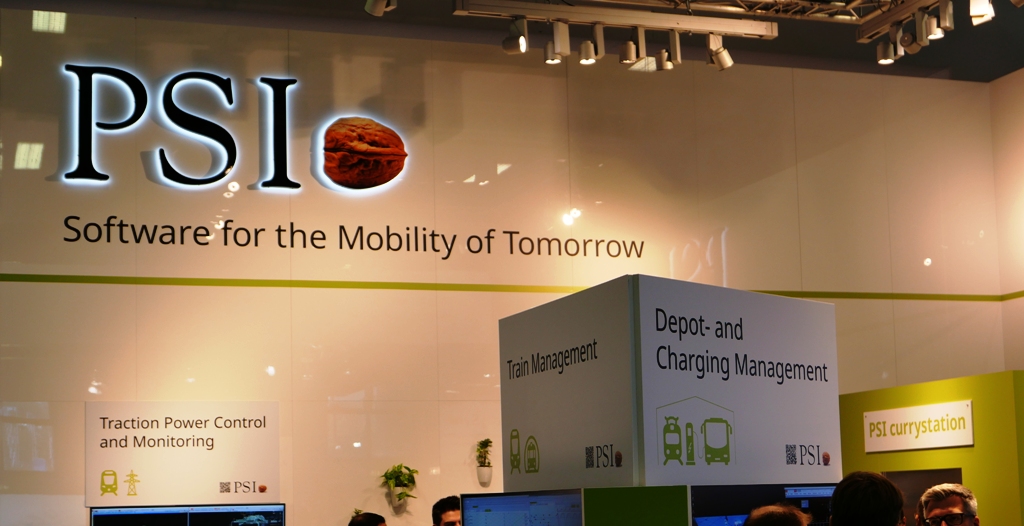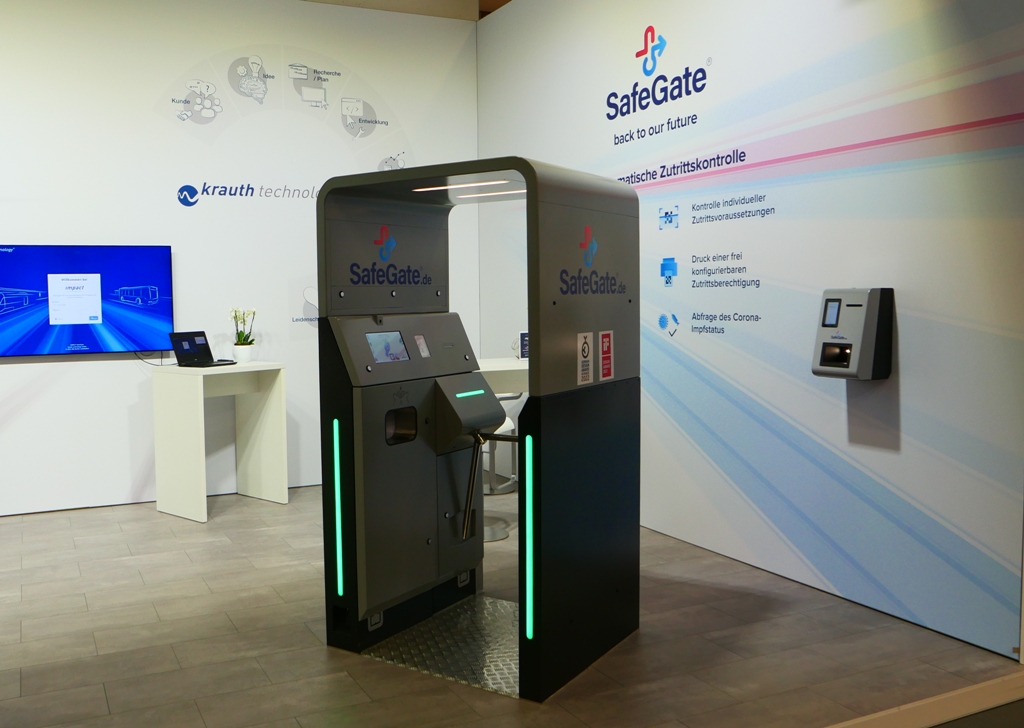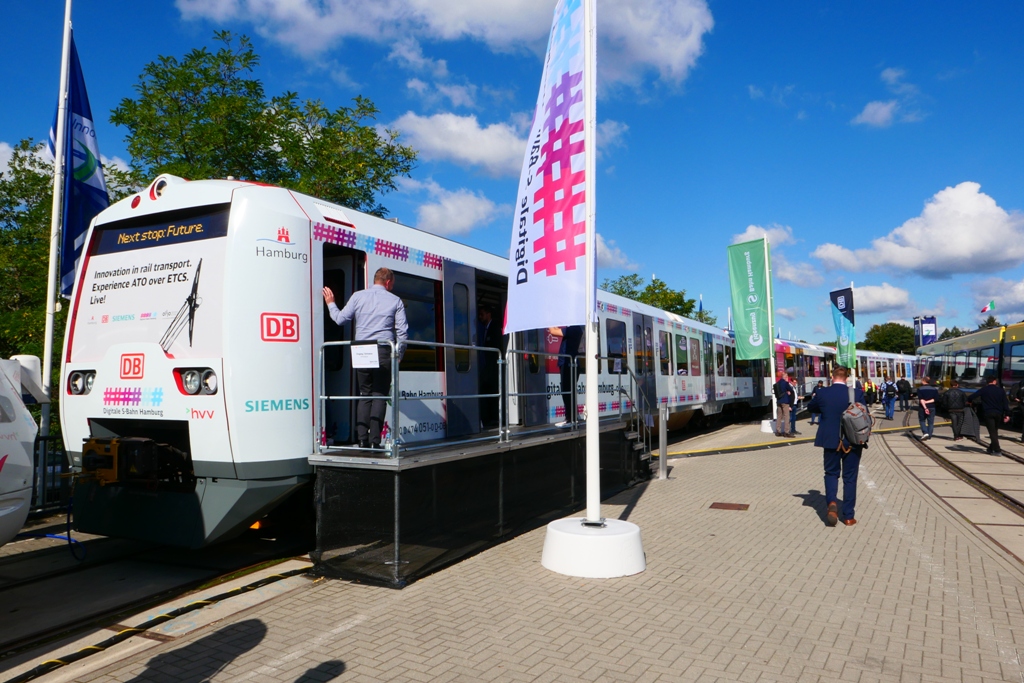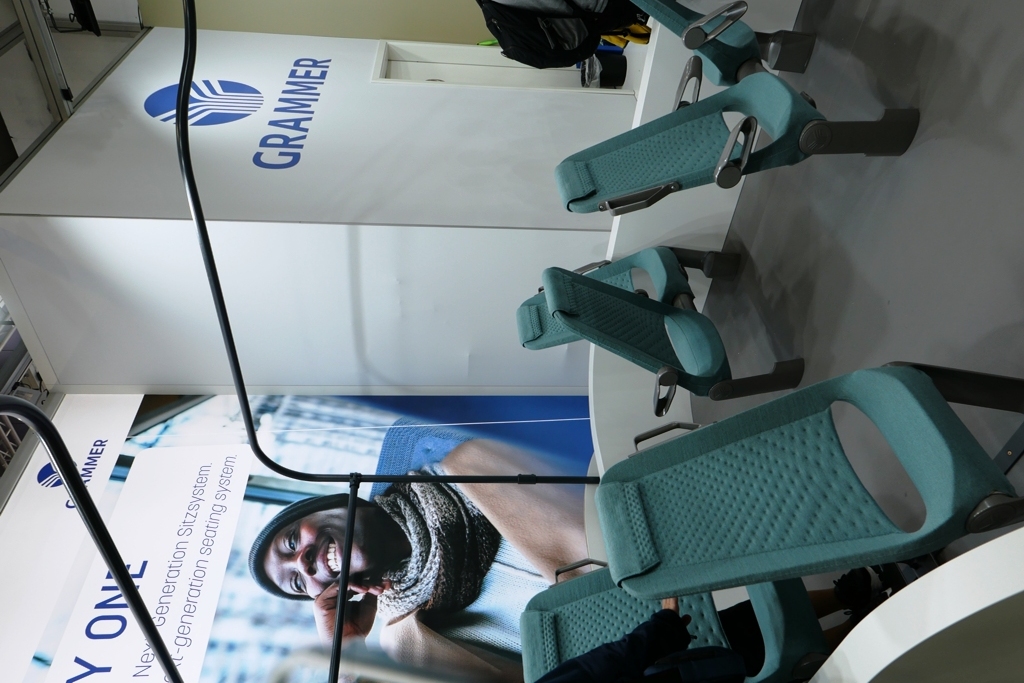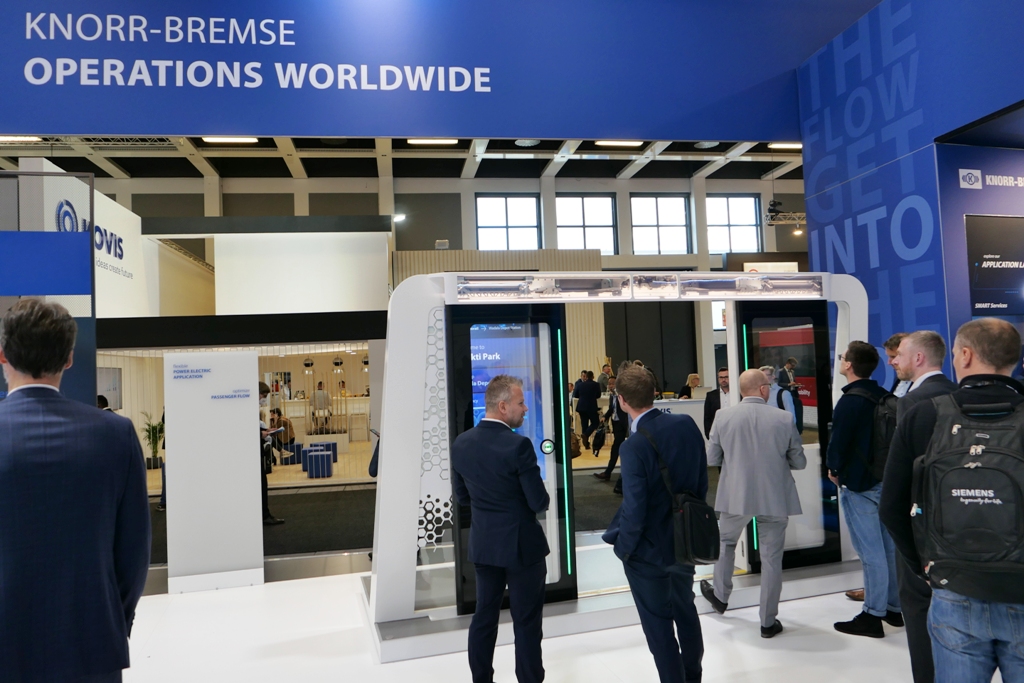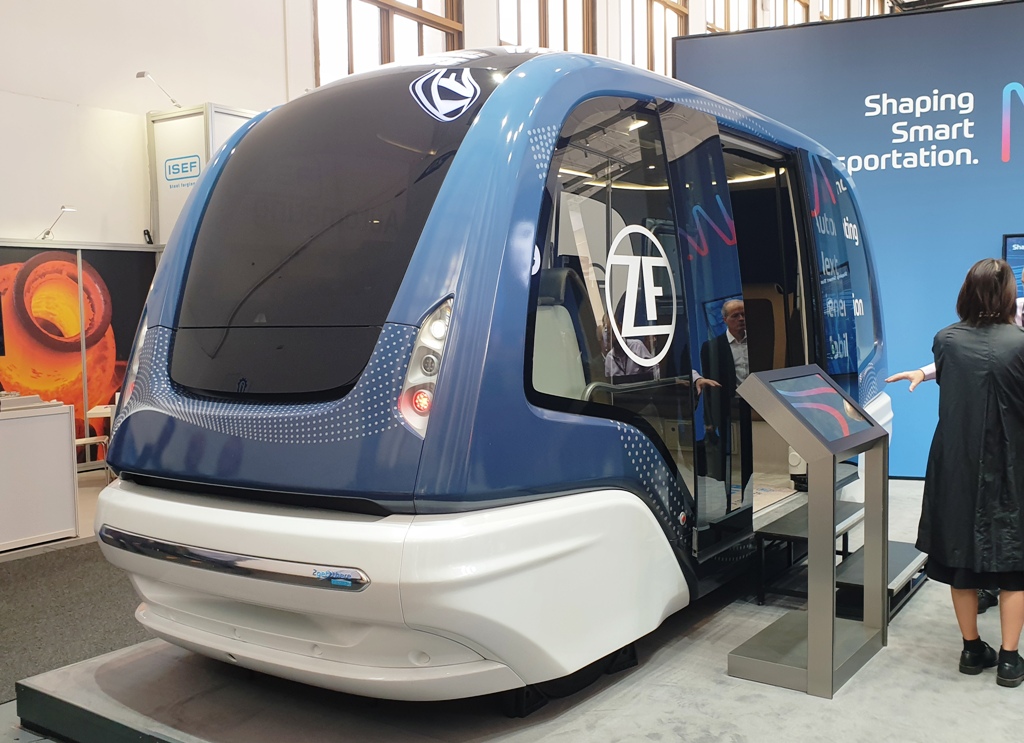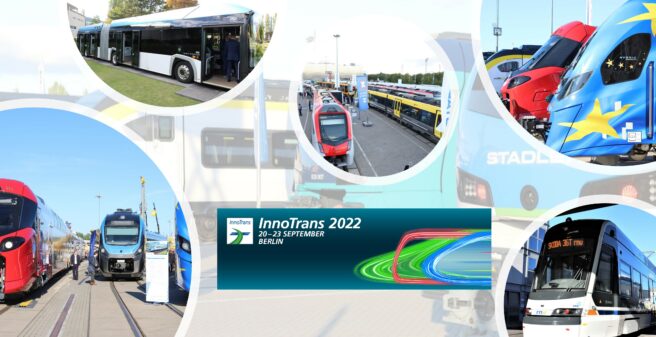
The entire world of transport technology and mobility met at the world’s leading trade fair InnoTrans in Berlin from 20 September – 23 September 2022. After four years, the trade fair was held again for the 13th time at the Berlin Exhibition Grounds and registered a similarly high demand as its predecessors. Numerous visitors, a high level of internationality and many business deals characterise InnoTrans, as do the broad market coverage and high innovation density. With 250 world premieres, the exhibitors presented more innovations than ever before. Trade visitors could expect to see 128 vehicles and exhibits on the track and outdoor areas.
Around 140,000 visitors from over 131 countries came to the world’s leading trade fair. 2,834 exhibitors from 56 countries were present. At the Berlin Exhibition Grounds they displayed the entire product and service diversity of the mobility industry.
“InnoTrans has once again impressively demonstrated that it is the industry summit that shows today what will be on the rail and road tomorrow. Here exhibitors present technologies for sustainable mobility first. InnoTrans is also a platform for international exchange for a trans-European transport network,” emphasises Martin Ecknig, CEO of Messe Berlin.
“After the pandemic-induced break, InnoTrans 2022 has made a phenomenal return. At last the industry family has come together again. After a long wait we were able to exchange ideas in person and look each other in the eye,” says Kerstin Schulz, Director of InnoTrans.
At this year’s InnoTrans the proportion of first-time visitors is particularly high at 56 percent. A total of 57.3 percent of visitors come from abroad. The high rate confirms InnoTrans’ status as the world’s leading trade fair. Trade visitors are primarily interested in rail transport technology, rail transport infrastructure and the 3.5-kilometre track and outdoor exhibition area. This is followed by the new Mobility+ exhibition area, a platform for services and products relating to mobility complementary to public transport.
Trams, light rail vehicles and metros
A total of six low-floor trams, one metro (for Vienna) and one dual-system light rail vehicle for Wales were exhibited at this year’s InnoTrans. The highlight was definitely the first vehicle of Stadler’s new TINA tram platform for Darmstadt. TINA stands for “Totally Integrated Low-Floor Drive”. During the development of the new tram generation, special attention was paid to passenger comfort. The completely step-free and barrier-free vehicle has a spacious interior with wide aisles, no cross steps at all and the most comfortable seats with comfortable legroom – even in the bogie area. Maximum headroom and panoramic windows provide an open feeling of space and an unobstructed view. This is made possible by a new type of bogie. As this is the latest development from Stadler, the bogies have been concealed as a precautionary measure. In addition to Darmstadt, orders have already been received for Baselland Transport, Rostock and Halle/ Saale.
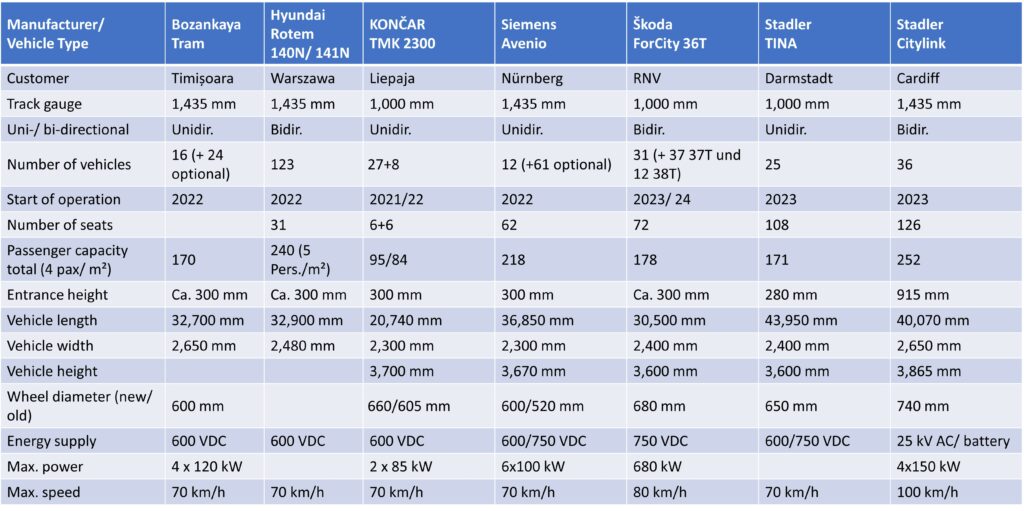
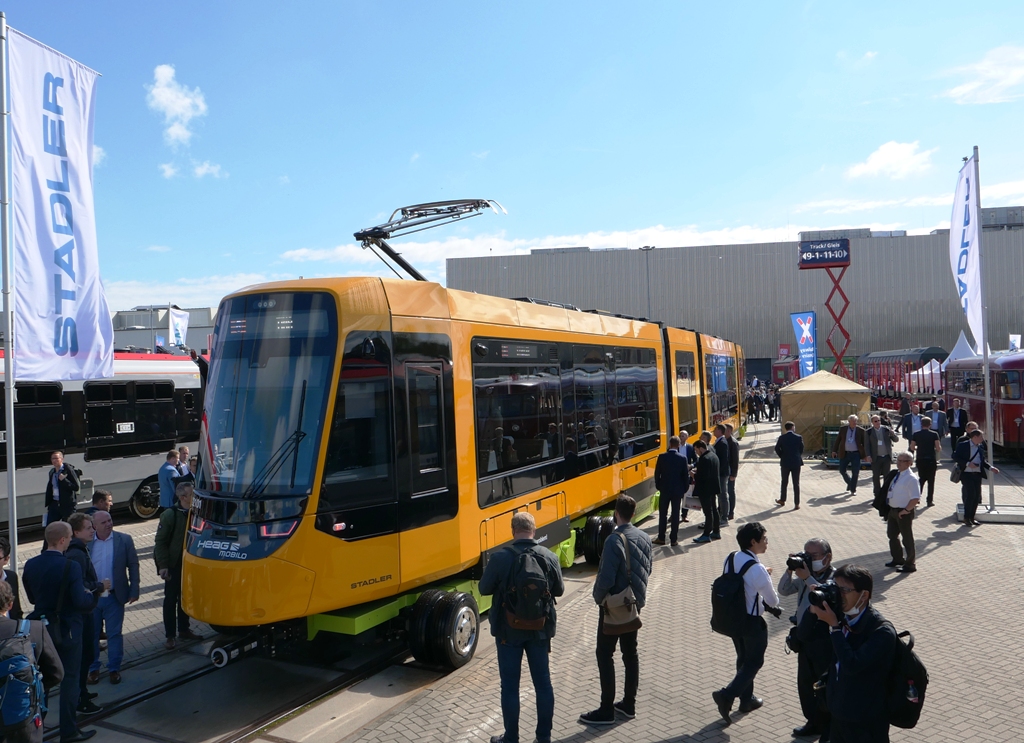
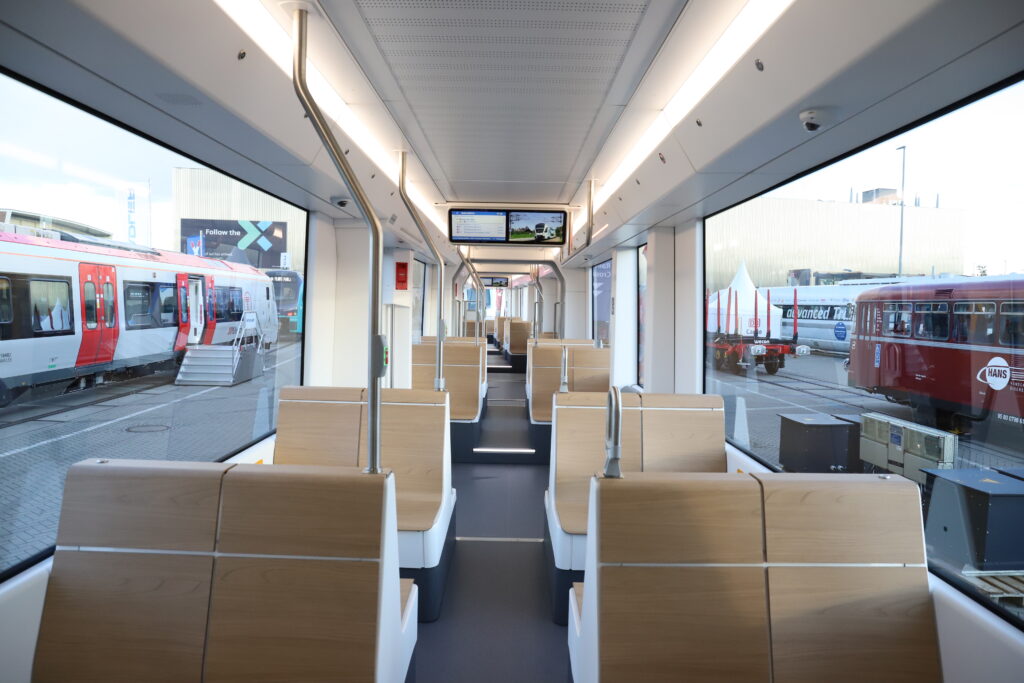
Hyundai Rotem showed its new tram for Warszawa (Warsaw). 123 vehicles will be delivered. The first vehicles have been in use in the Polish capital since the beginning of the year. At the Hyundai Rotem stand was a model of the hydrogen tram. For almost two years Hyundai Rotem has also been working on concepts for fuel cell trams, which are being developed and tested in Ulsan, South Korea. In early January 2022, a memorandum of understanding was signed with the Egyptian infrastructure company Orascom Construction and the French Colas Rail for the construction of a hydrogen tram in the new Egyptian capital (New Administrative Capital/ NAC). Rotem says it sees the hydrogen tram as an alternative to trams with energy storage systems, as the weight and vehicle costs for a fuel cell tram are cheaper. Last December, the company also won a contract to supply 40 low-floor trams in Edmonton, Canada.
Končar from Croatia showed one of the new three-car 100% low-floor trams for Liepaja in Latvia. The vehicle is identical in construction to the 70 vehicles of the Zagreb tramway. In the version for Liepaja, however, it is a shorter, three-part variant.
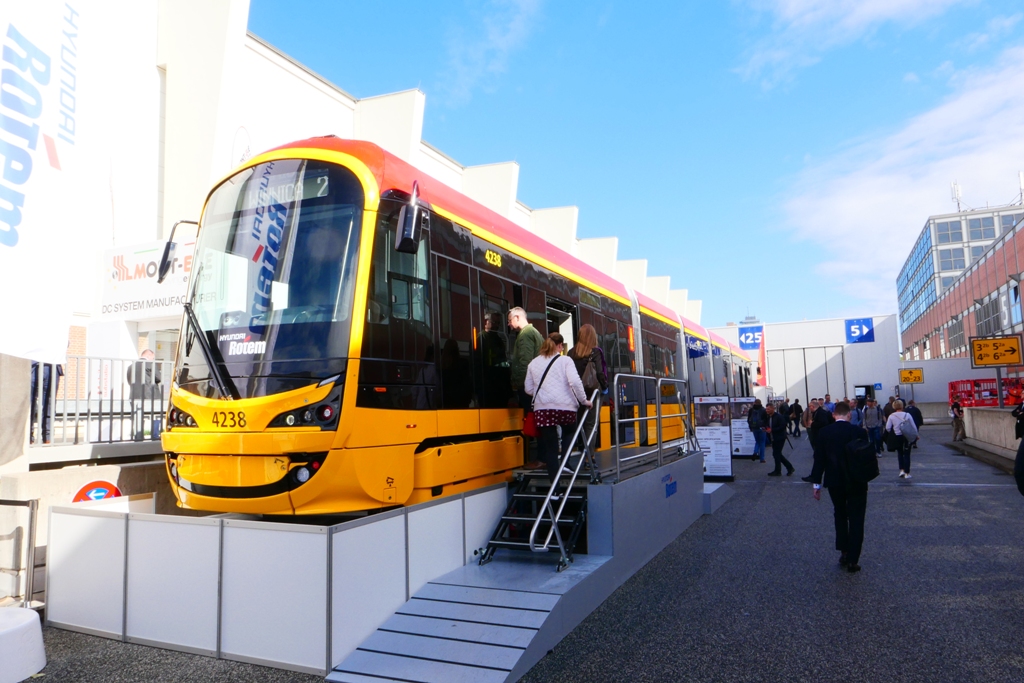
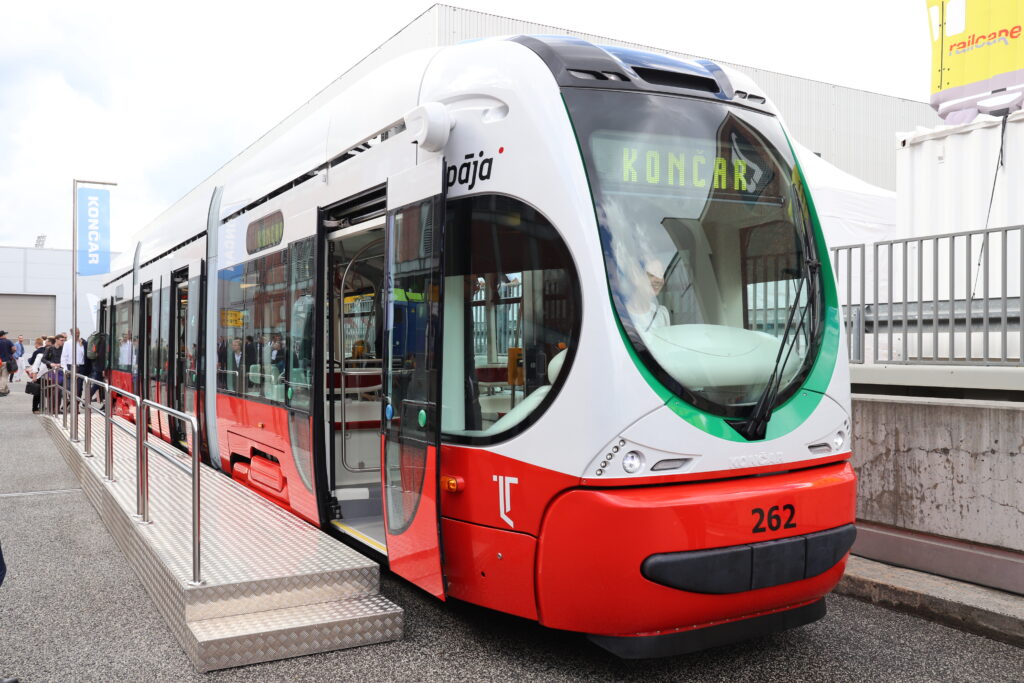
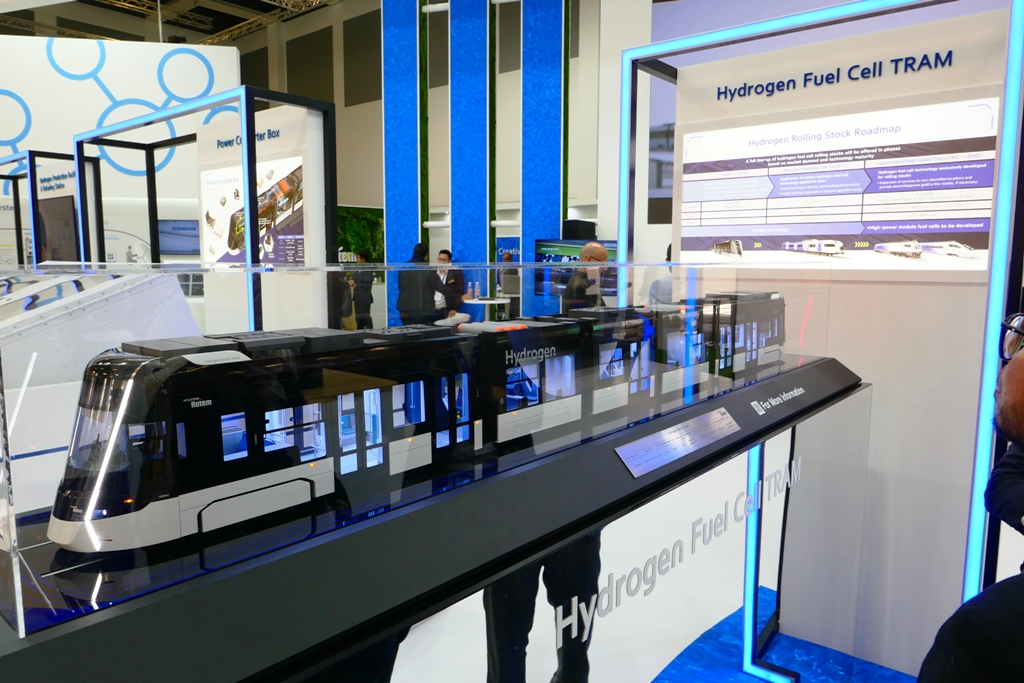
Škoda Group showed the new ForCity Smart 36T tram for the RNV network. This vehicle is the first in a series of trams that will operate in the German cities of Mannheim, Heidelberg and Ludwigshafen. The 30-metre-long, low-floor, two-directional vehicle is designed for both tram and railway operation.
Furthermore, Škoda showed the anti-collision system. It is an important step in the development of fully autonomous vehicles. The anti-collision system has completed the first development phase and has already been tested for six months on trams in Tampere.
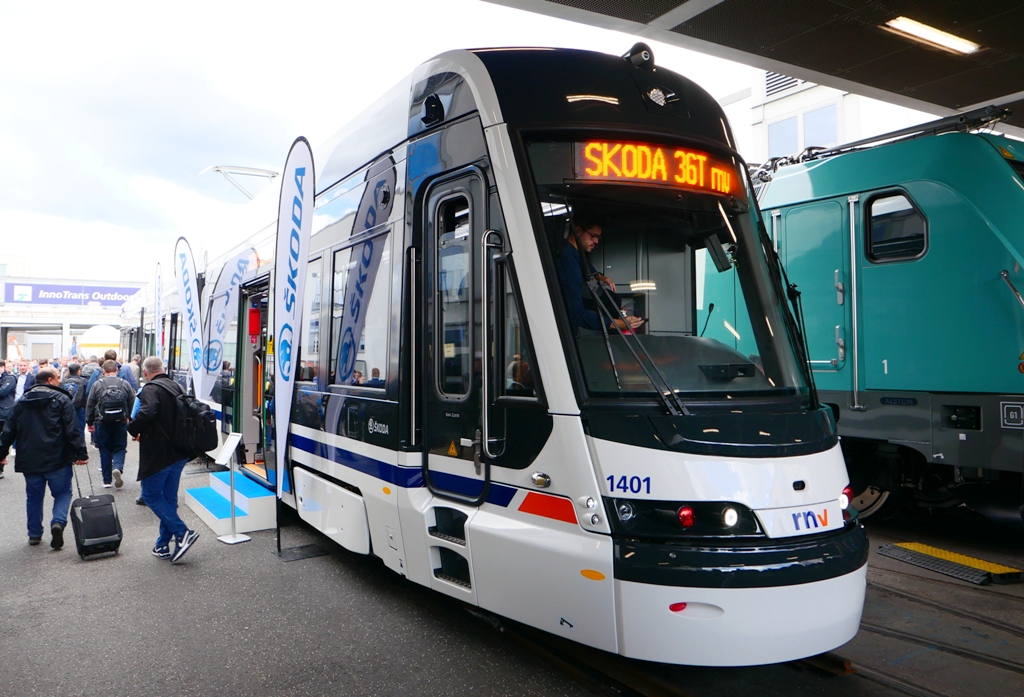
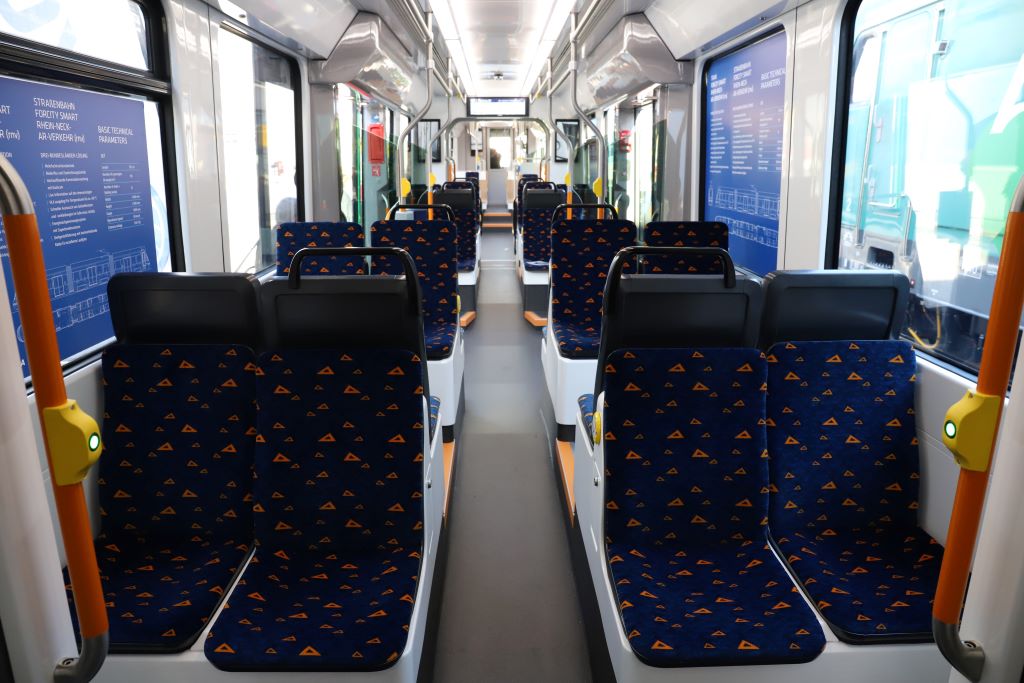
Bozankaya exhibited its new low-floor tram for Timișoara, Romania. The special feature of the five-section vehicle is that it has a battery range of at least 70 kilometres. With this feature, tram operation in the Capital of Culture 2021 can take place without overhead lines in the future. The Turkish tram manufacturer is currently supplying 16 100% low-floor trams to the Romanian city. There is an option for a further 24 vehicles. Similar vehicles will also be delivered to Iași.
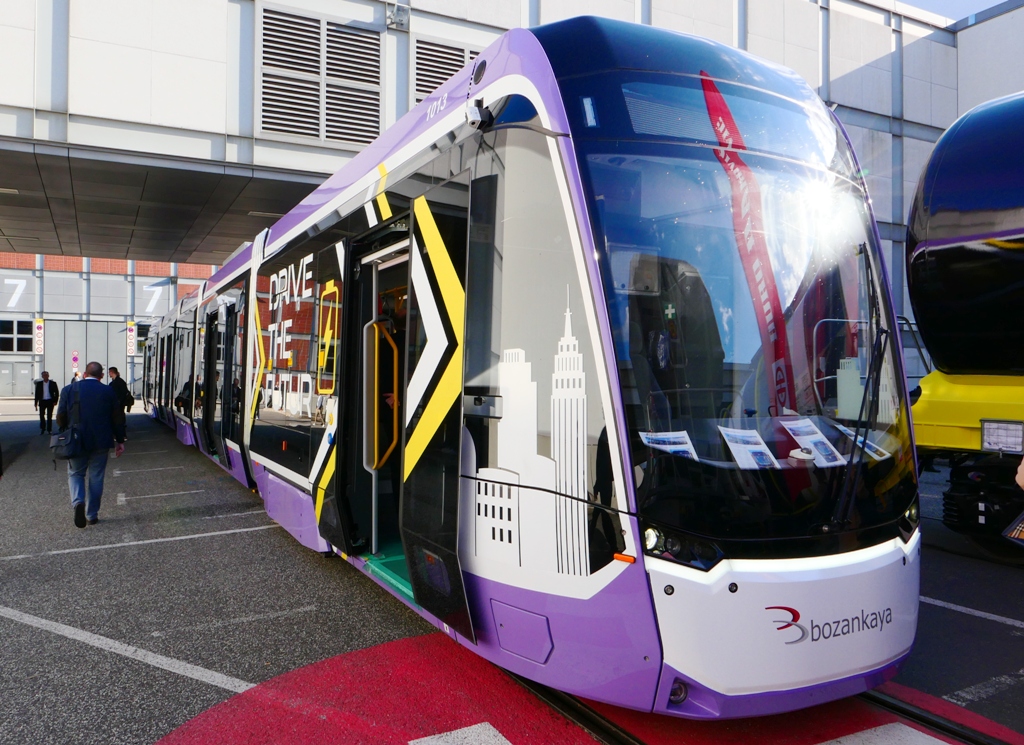
Siemens showed the new Avenio in the four-car variant for VAG Nuremberg. The Avenio is a 100 per cent low-floor vehicle with eight doors. The first twelve vehicles are in delivery and driver training has already begun. There is the possibility of extending this order to up to 76 vehicles.
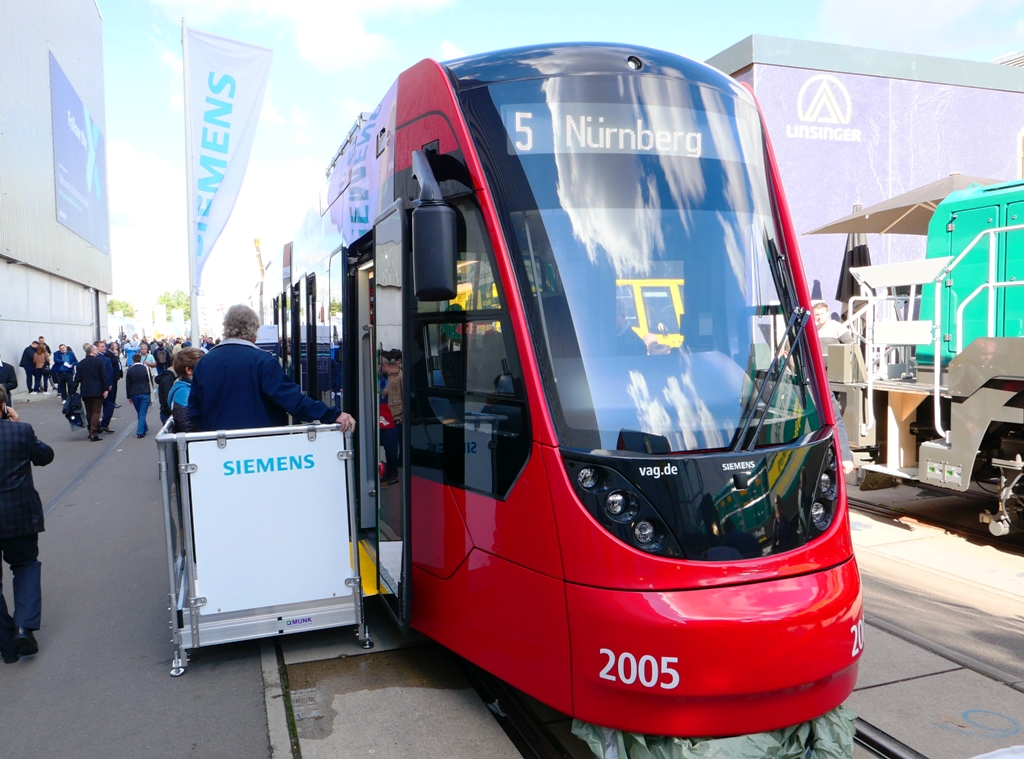
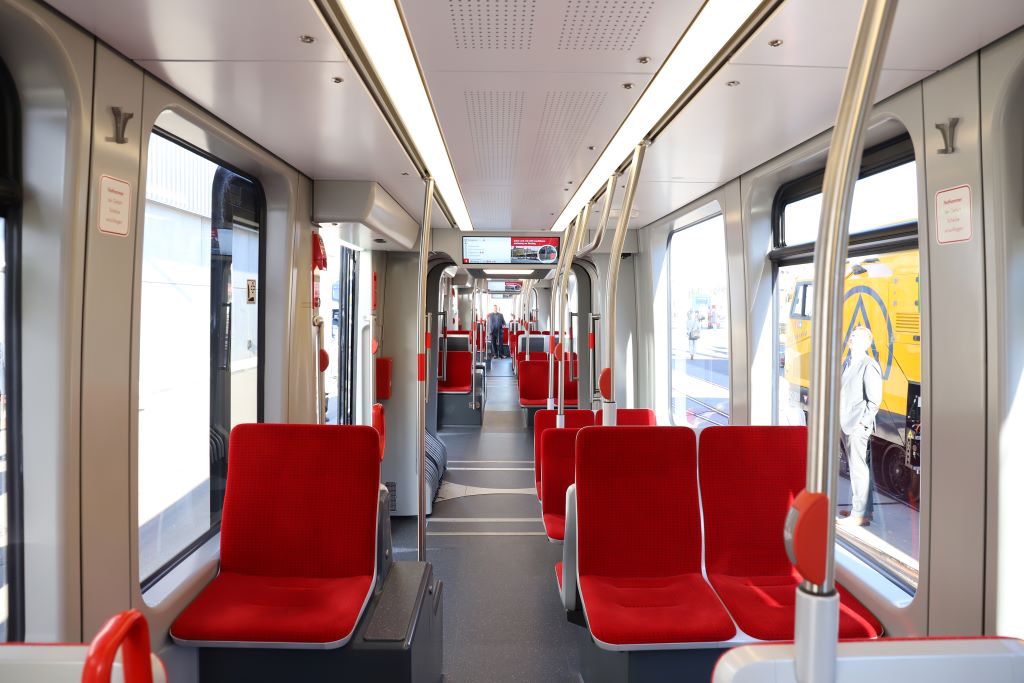
The medium-sized tram and light rail manufacturer Heiterblick from Leipzig did not show any vehicles on the outdoor area this year. Instead, models of the new B trams for Dortmund and the low-floor tram for Würzburg were on display at the stand.
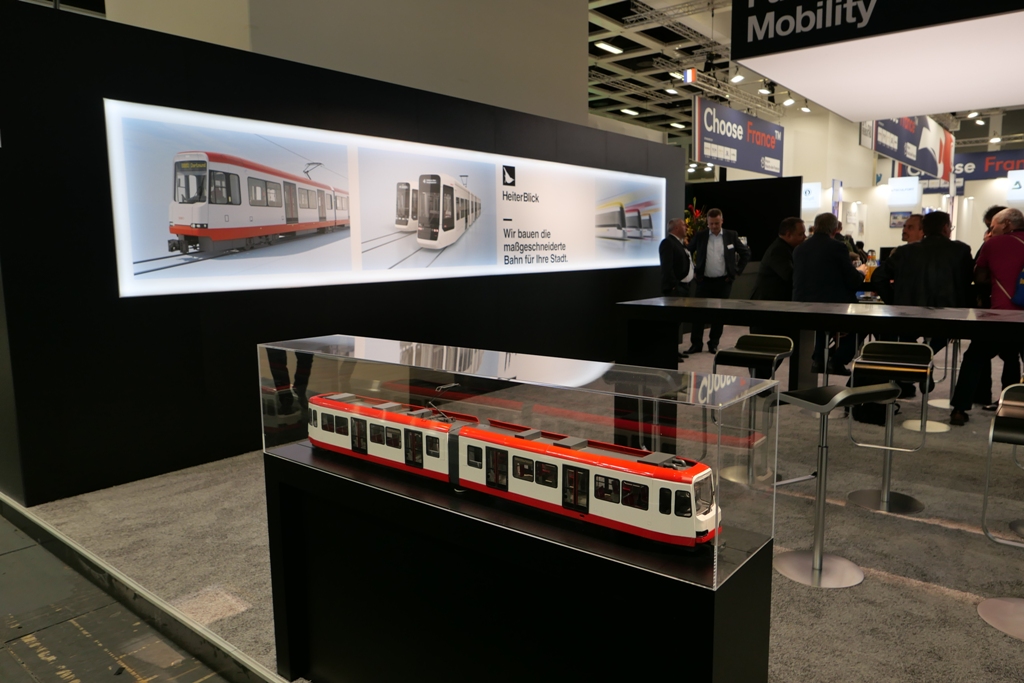
Stadler showed a total of seven new vehicles on the outdoor area. One of them was the CITYLINK for Wales/ England. It is part of the fleet of 36 CITYLINK ordered by Transport for Wales. The CITYLINK is a tram-train that can be used on both tram and mainline lines. The CITYLINK for Transport for Wales is additionally equipped with a battery for the first time, so that it can also be used on non-electrified lines. The three-car vehicle has a floor height of 915 mm to allow stepless boarding and alighting at the British elevated platforms.
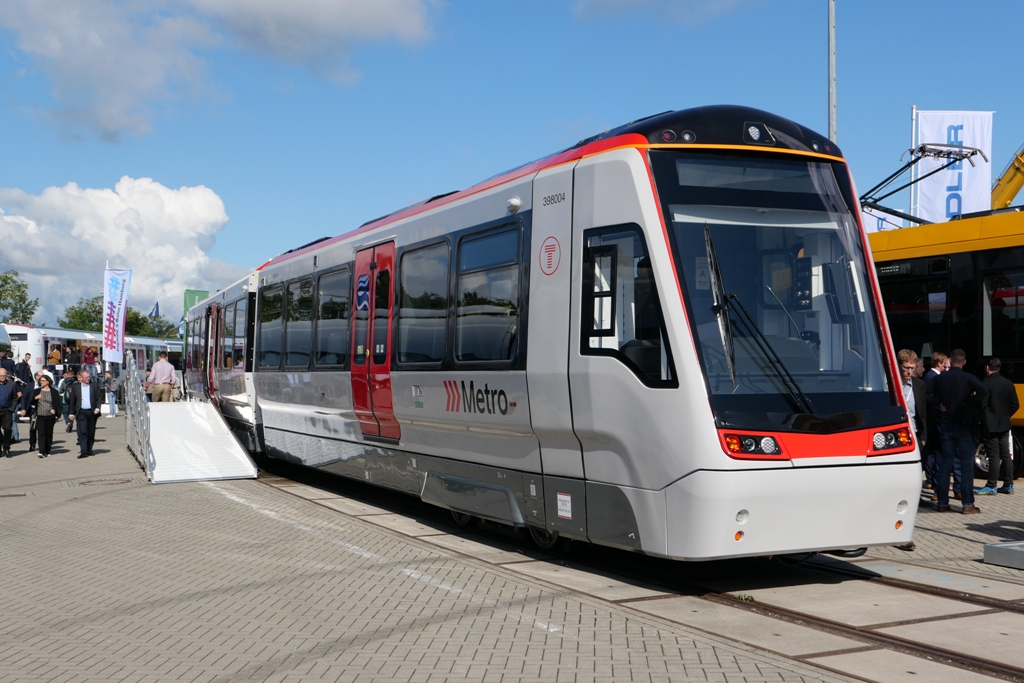
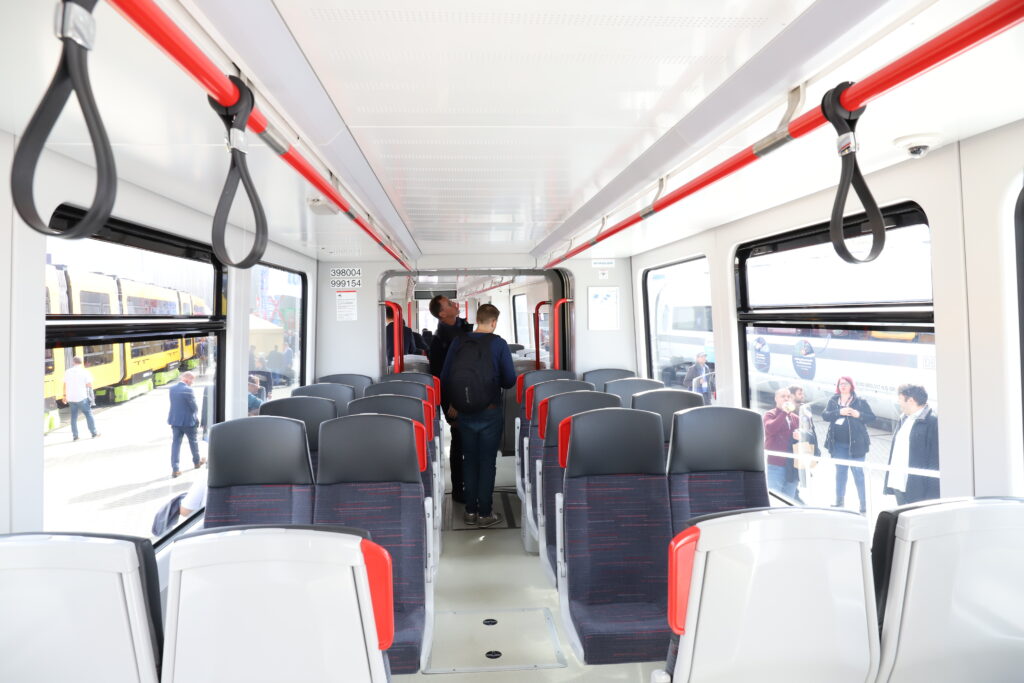
In addition to the new Avenio for Nuremberg, Siemens showed two cars of the new X-car series for the Vienna metro on the outdoor area. Wiener Linien commissioned Siemens in September 2017 with the delivery and maintenance of 34 type X metro trains. The order includes an option for a further eleven trains. The vehicles are suitable for both fully automatic operation and operation with a driver. They are to be used driverless on the future U5 line and with a driver on the U1 to U4 lines of Wiener Linien. The trains will be built at the Siemens factory in Vienna. The maintenance of the new vehicles is also part of the contract. This will be carried out by Wiener Linien staff, but on behalf of Siemens.
The new X-cars are gradually replacing the old Silver Arrows, some of which have been in service since 1972. Like their successor, the so-called V-car, the new sets will also be accessible, barrier-free, air-conditioned and video-monitored throughout. The new trains are also equipped with a number of innovative solutions. For example, the driver’s cabs can be dismantled. In fully automatic operation, this allows the floor space of the driver’s cab to be used for passengers at a later date and increases the passenger capacity of the trains. The X-car also features the innovative Passenger Information System Plus for the first time worldwide: information displays above each door provide passengers with position-dependent route guidance to the next station, including current connections, even before they arrive at the station. This means that passengers already know before they reach the station in which direction they will have to proceed after their arrival. This leads to an optimisation of both passenger flow and travel comfort.
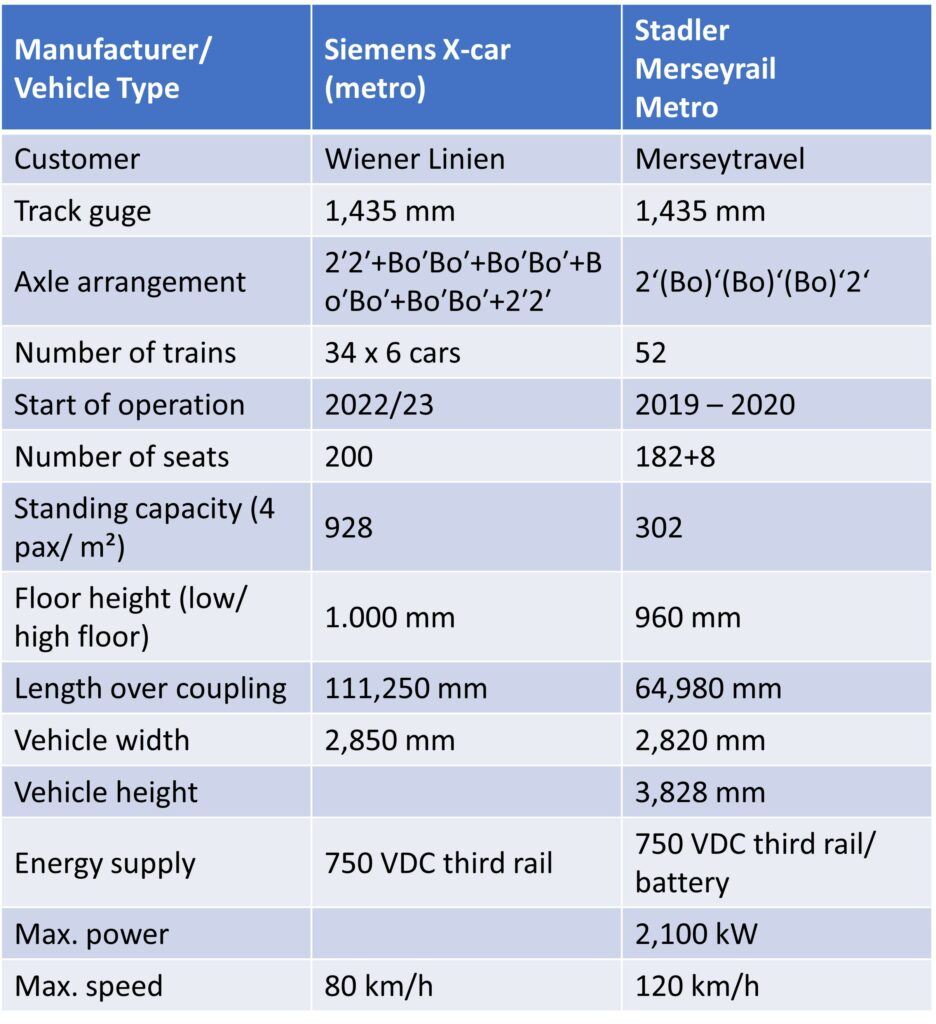
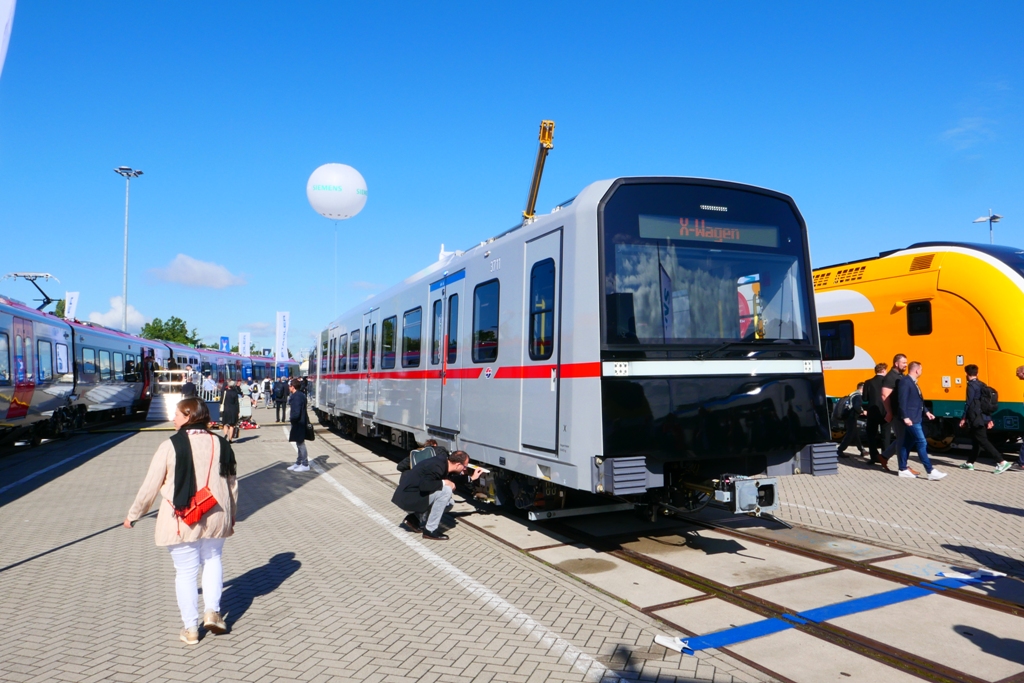
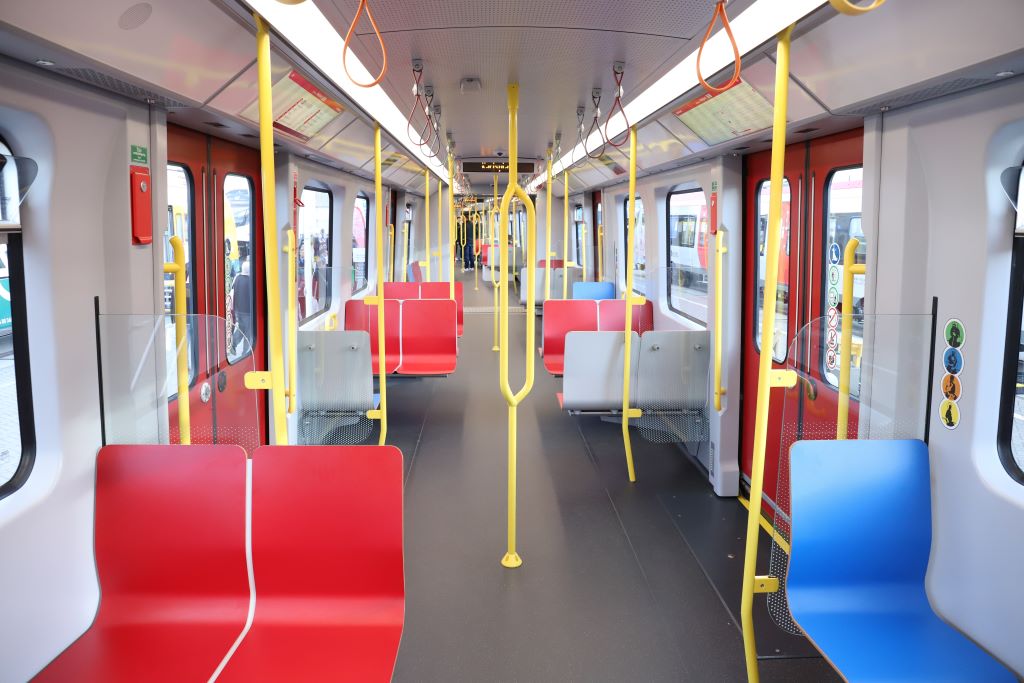
Regional trains
Hydrogen drives using fuel cells was one of the major topics at InnoTrans. For regional transport alone, two trains were shown that are built according to different concepts. Stadler showed the Flirt H2, the first hydrogen train for the USA. This is not a prototype, however, but a series-production vehicle, according to Ansgar Brockmeyer, Head of Sales and Marketing. What is special about the train, he said, is the application of the technology: the entire hydrogen technology is housed in the centrally located “power car” – the passenger areas in the end cars, which correspond to the electric Flirt, are free of H2 technology. The Siemens Mireo Plus H is different. This train has the hydrogen technology installed from the roof of a train that is largely identical to the electric Mireo. The Stadler Flirt H2 is scheduled to run in California from 2024, where it is expected to cover the required 500 kilometres a day without refuelling, even in very hot weather and thus with high output for the air conditioning system. Battery drive is also an option for making regional trains locally emission-free. Stadler presented the new Flirt battery together with the client Nah.SH (Nahverkehrsgesellschaft Schleswig-Holstein). The vehicle can run under overhead line or with the battery. The first of the 55 trains ordered will go into passenger service in May 2023. This means that around 40 per cent of the services in Schleswig-Holstein’s regional transport will then be provided by battery trains.
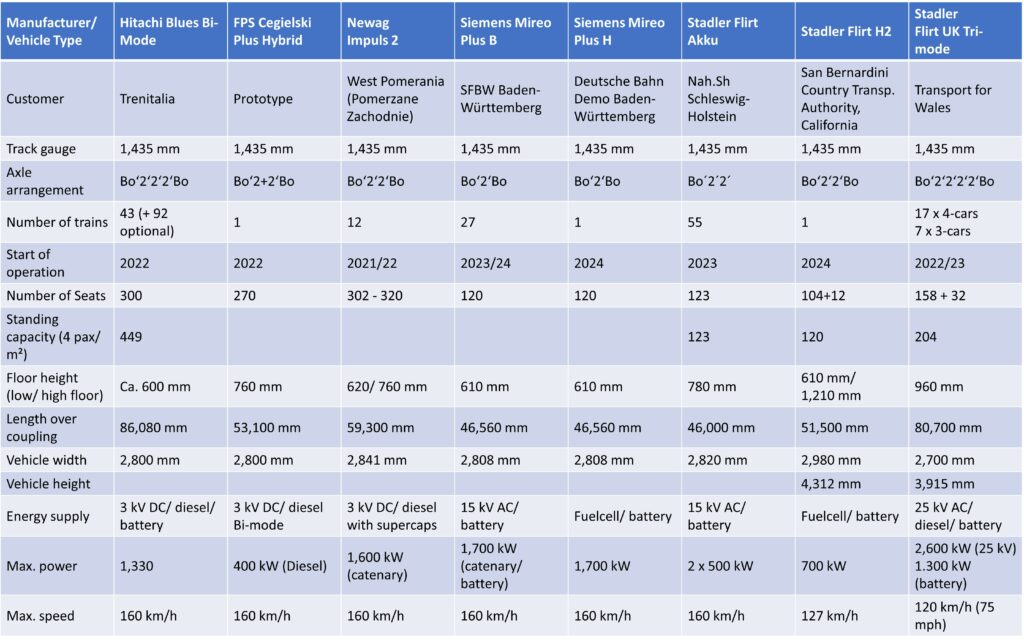
The trimodal FLIRT is one of three vehicles destined for the British market that Stadler officially presented at InnoTrans 2022. The special feature: it can run overhead electric, battery electric and diesel electric. The concept with Powercar and Jakobs bogies is an innovative and cost-effective way to offer fully electric, environmentally friendly operation north of Cardiff on the Valley lines.
The IPEMU (Independently Powered EMU) for the Merseyrail suburban railway in Liverpool is also equipped with traction batteries. The “independently powered” electric multiple unit for Liverpool City is the first of its kind to enter service in the UK. The IPEMU will allow customers to extend operations on non-electrified routes and avoid infrastructure works, promoting integrated travel and increasing passenger numbers. Stadler is supplying a total of 52 five-car articulated trains with Jacob bogies to Merseyrail.
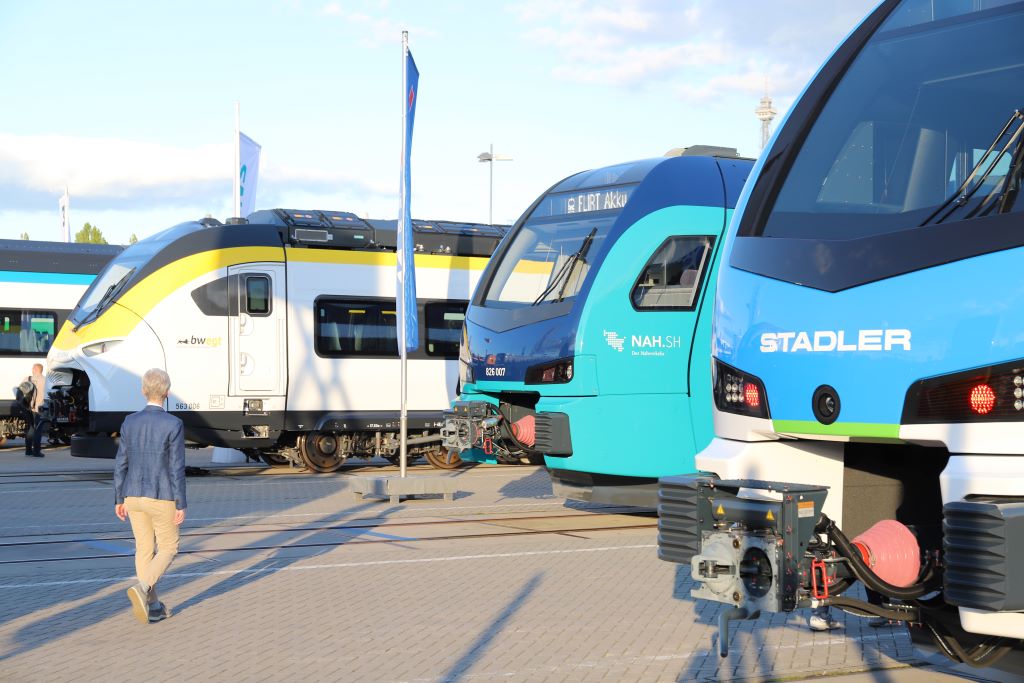
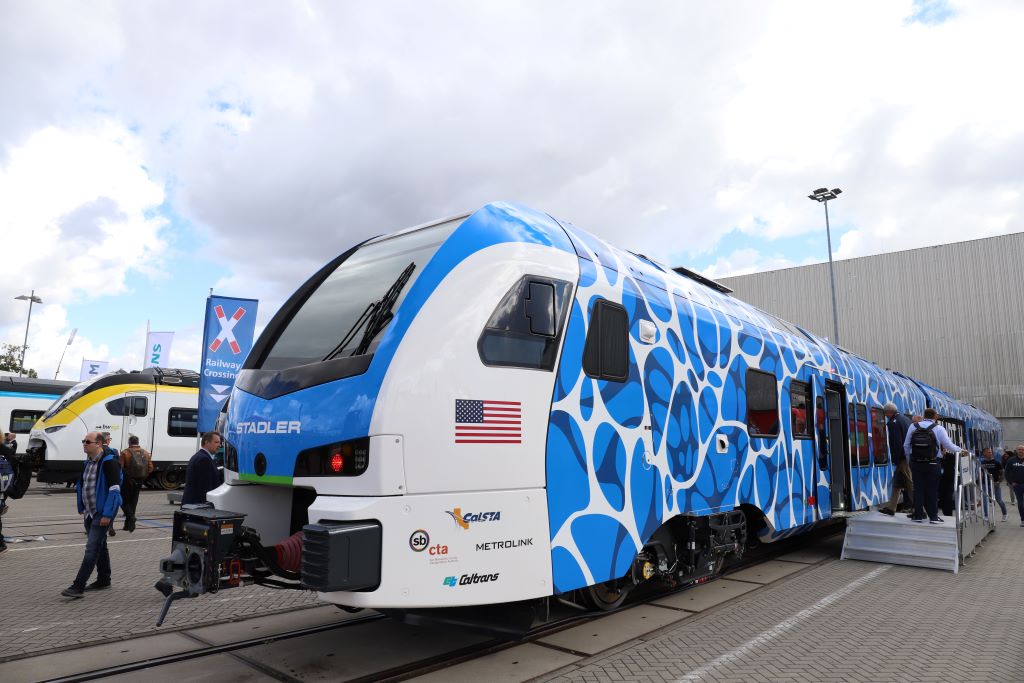
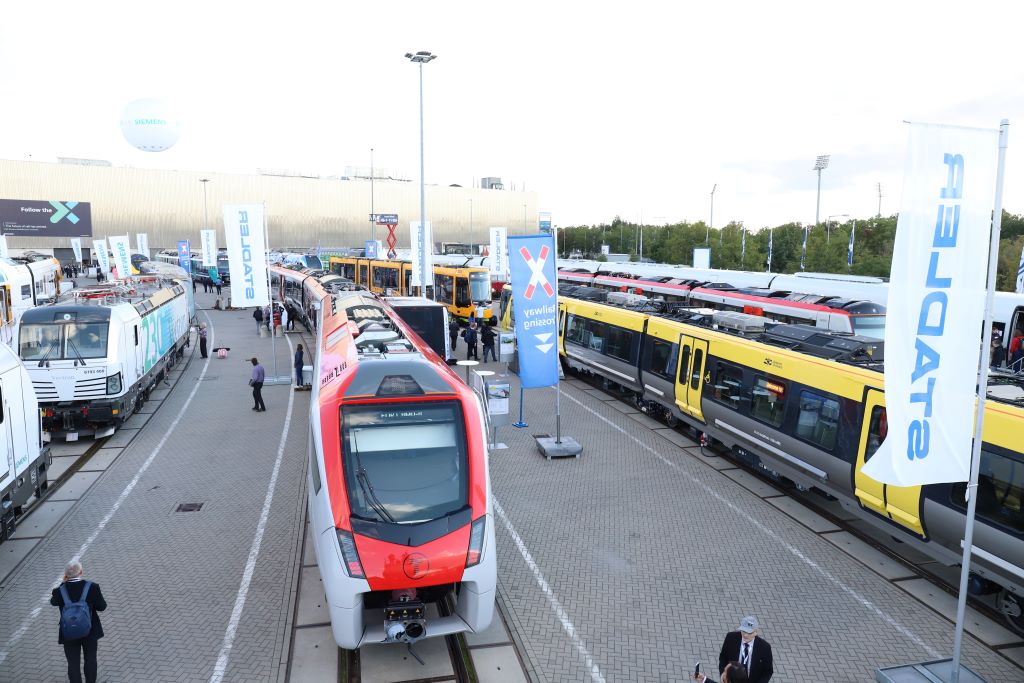

Alstom presented itself at this year’s InnoTrans for the first time after the purchase of Bombardier Transportation. Only two mainline vehicles and, surprisingly, no urban rail vehicles were on display: a TRAXX freight locomotive and, for the first time, the new Coradia Stream HC double-deck train in the variant for the Luxembourg state railways CFL. The train has a speed of up to 200 km/h and is equipped with on-board European Train Control System (ETCS) devices and ATO autopilot with the GoA2 level of automation.
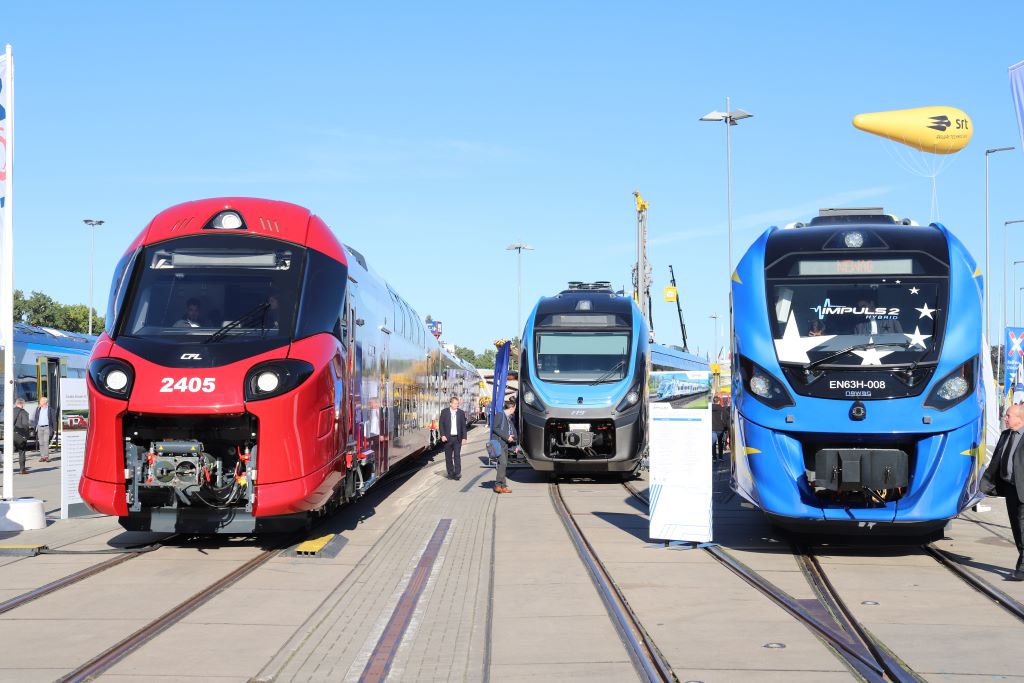
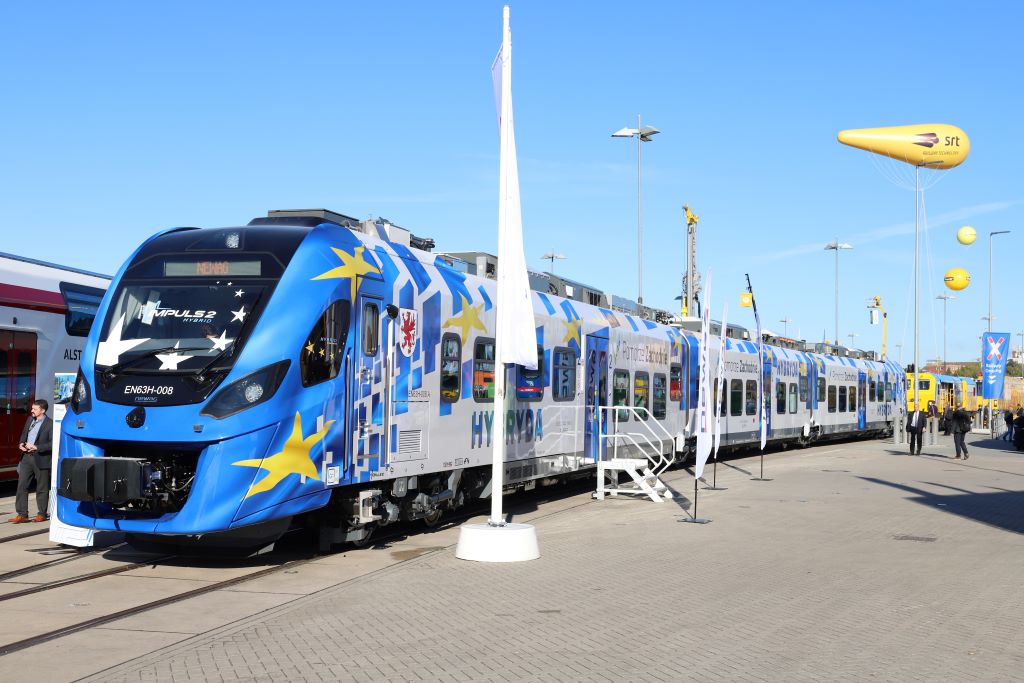
The end carriages of the train are double-decked, while the middle carriage is single-decked. All electric drive components are installed on the single-deck car. The train can consist of three to six carriages.
The Coradia Stream High Capacity trains for CFL are being built under a contract signed in 2018. The trains are intended for operation in Luxembourg, Belgium and France. Other orders from the Coradia Stream family have been received from Lower Saxony (LNVG) and Baden-Württemberg (NVBW).
The Polish manufacturer Fabryka Pojazdow Szynowych (FPS) showed its Plus hybrid train with diesel and battery drive. With this vehicle, the historic Poznan manufacturer wants to participate in the Polregio tender for 200 trains. This makes FPS the third manufacturer of such vehicles in Poland. Bimode vehicles are already manufactured by Newag and Pesa.
FPS started developing the Plus train in 2017. The project was carried out under the Innotabor (innovative rolling stock) programme of the Polish Ministry of Industry. The National Centre for Research and Development (NCBiR) of Poland provided a grant of 6.5 million euros for the development and construction of the train.
The manufacturer Newag, also from Poland, showed the Impuls 2, which is also a hybrid vehicle with diesel-electric drive with supercapacitors as energy storage. The three-car train with the type designation 36WEh is currently being delivered to the West Pomerania region. The EU livery in blue with yellow stars is striking.
Hitachi Rail from Italy also showed a bi-modal diesel-electric train with battery drive. The so-called “Blues” is based on the Masaccio platform and is equipped with a diesel-electric drive with integrated batteries. This means that the train can also be used on non-electrified lines.

In addition to the Avenio tram and the silver X-car for Vienna and two locomotives, there were three yellow Siemens regional trains on display. The Desiro HC for regional transport in Berlin-Brandenburg was presented for the first time, which ODEG will use on the RE1 and RB17 lines from the timetable change in December 2022. The 6- or 4-unit electric multiple unit with its combination of single-deck motor carriages and double-deck running carriages reaches an impressive length of up to 157.6 metres. With a width of 2,820 mm and a height of 4.64 m, it can hold up to 637 passengers and 49 bicycles at a time at peak times. HC stands for High Capacity and is the special feature of the single- and double-decker multiple-unit train from the Siemens Desiro product series. With its large amount of space, the Desiro HC takes into account the increased passenger volume in conurbations.
The other two yellow regional trains are somewhat shorter: The 46.56 m long two-car Mireo vehicles are special in that they are a battery train (Mireo Plus B) and a fuel cell train (Mireo Plus H) – both trains are painted in the BWegt design of Nahverkehrsgesellschaft Baden-Württemberg.
About the battery train: In 2020, the Baden-Württemberg State Office for Rail Vehicles (SFBW) has ordered 27 Mireo Plus B trains from Siemens Mobility. The two-car electric multiple units, each with 120 seats, can run on lines with and without overhead lines thanks to their battery hybrid drive. They are to be used in regional rail transport on the 8 Ortenau network. Delivery of the multiple units is scheduled between June and December 2023.
The range of the Mireo Plus B in battery mode is more than 80 kilometres under real conditions. The batteries can be charged on the overhead line and by using the braking energy. The battery system is mounted underfloor and includes two battery containers. Long-life lithium-ion batteries are used. It is planned that Siemens Mobility will also take care of the maintenance of the trains for almost 30 years. The trains will be built at the Siemens Mobility plant in Krefeld.
At the same time, Siemens and DB presented the fuel cell train Mireo Plus H, which will start test runs in Baden-Württemberg in 2023. From 2024, it will be in regular passenger service between Tübingen, Horb and Pforzheim for the H2goesRail project, replacing a diesel railcar running there.
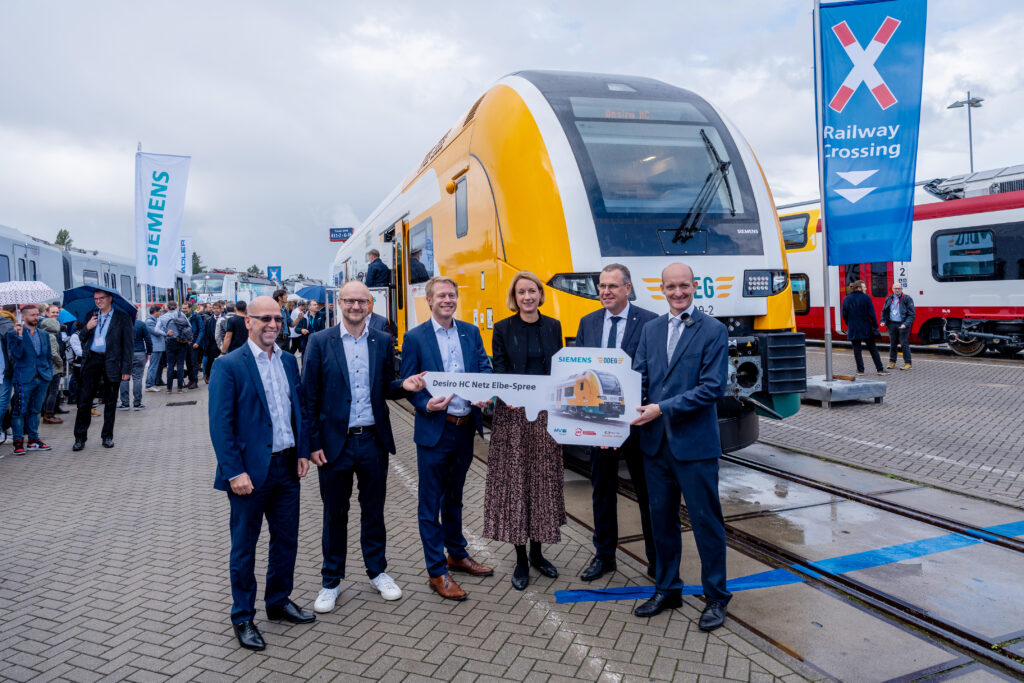
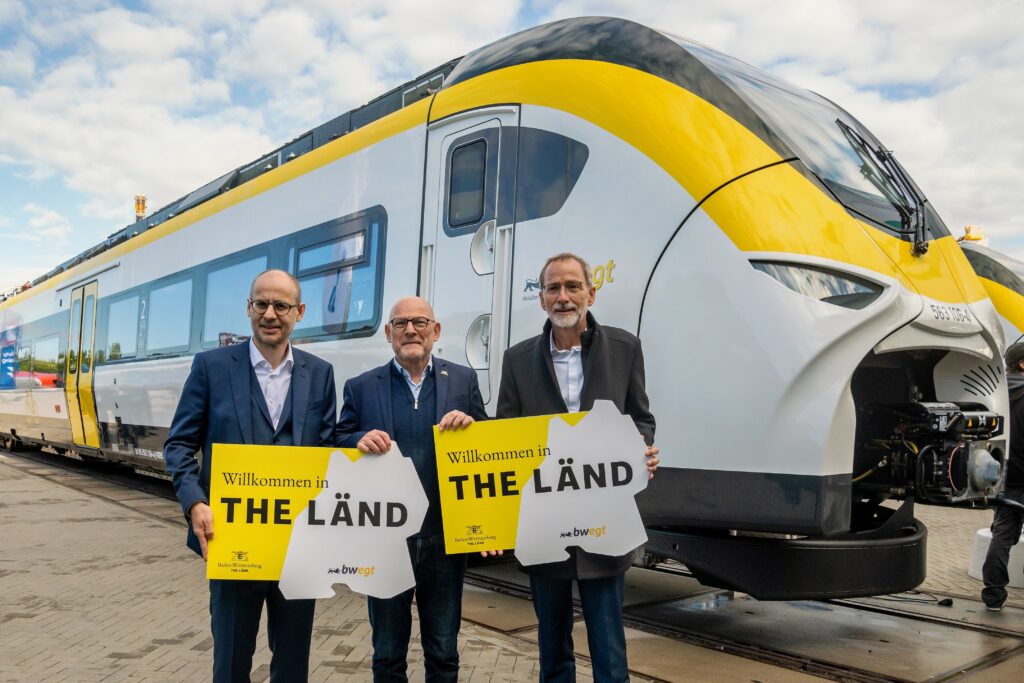
Deutsche Bahn showed two models of the Ideenzug, showcasing new interior concepts for more flexible and comfortable passenger experience. In front of the south entrance, visitors with an appointment were able to see the IdeenzugCity, which combines innovative interior concepts with a modern design. A converted double-decker coach of the Südostbayernbahn (SOB), in which some elements have already been implemented, was on display at the fair. The idea train is a joint project of the Südostbayernbahn (SOB), the DB subsidiary and the design office Neomind and was presented to the public for the first time at InnoTrans. Among many other special features, it combines four modules that are geared to the different needs of passengers: an office for working in peace and quiet, a regulars’ table for cosy get-togethers, a family module for generous relaxation and the “New Sitting” module with particularly ergonomic seating.
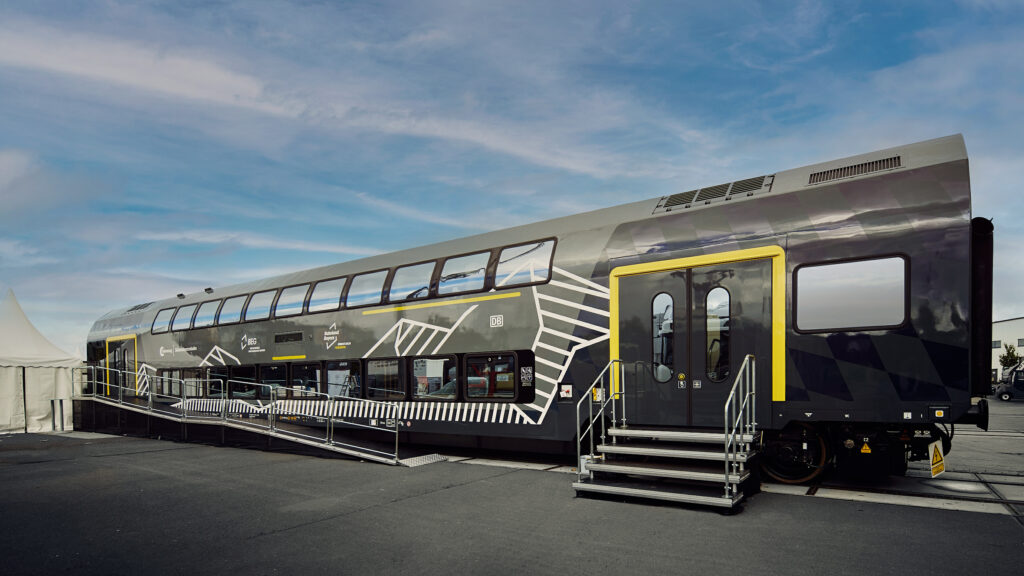
Exterior view of the double-deck Ideenzug of Deutsche Bahn
I © Deutsche Bahn AG/ neomind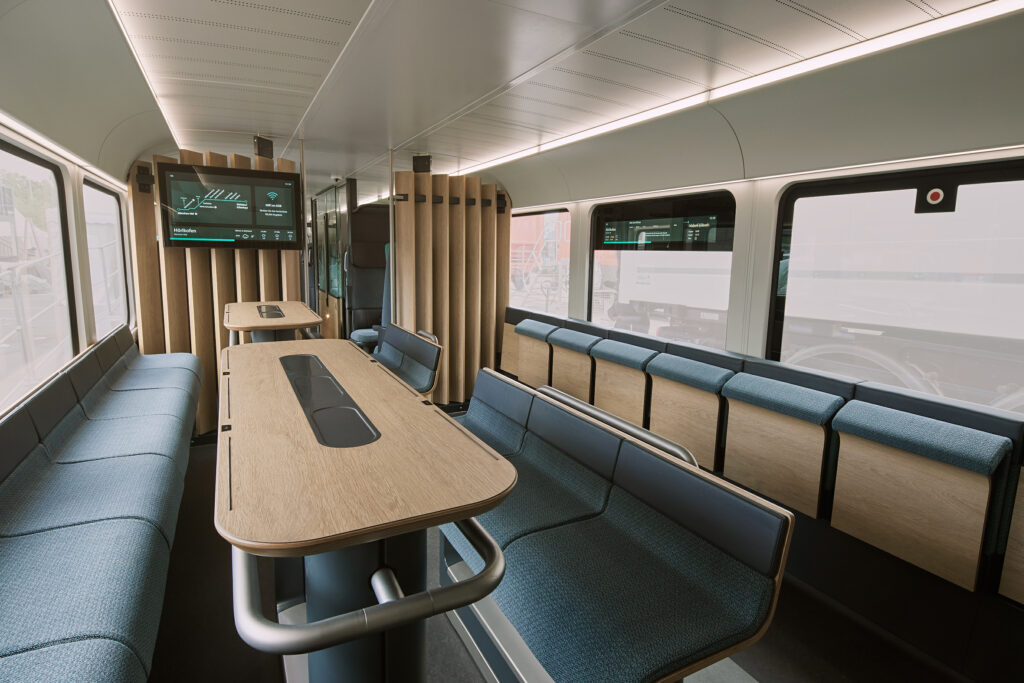
One example of the innovative interiors of the regional Ideenzug I © Deutsche Bahn AG/ neomind
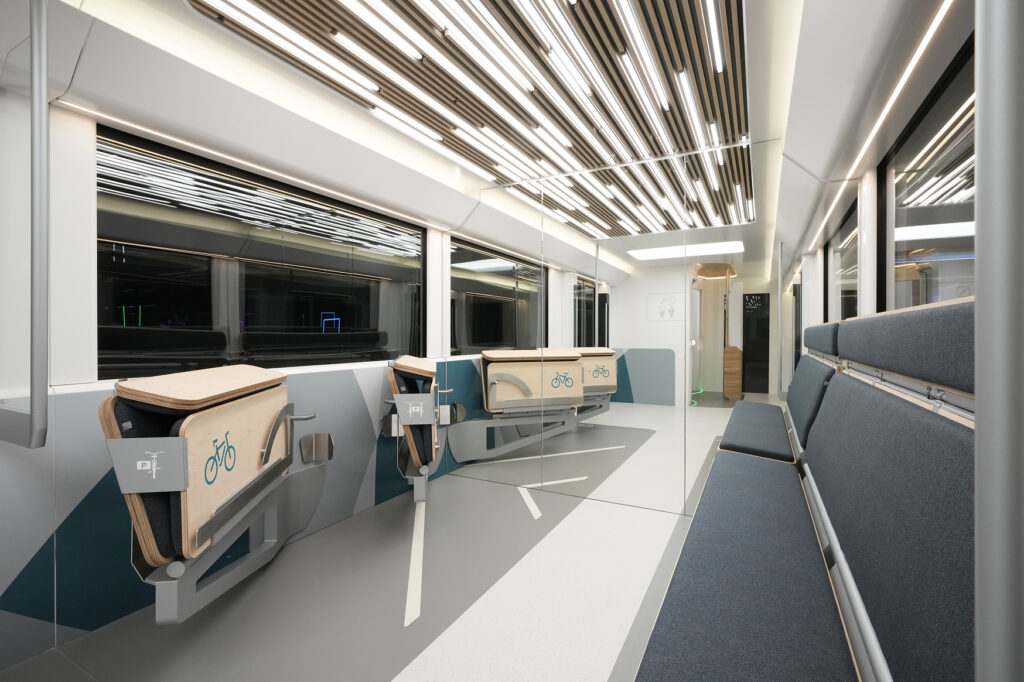
Flexible interiors – the IdeenzugCity of Deutsche Bahn I
© Deutsche Bahn AG / Oliver Lang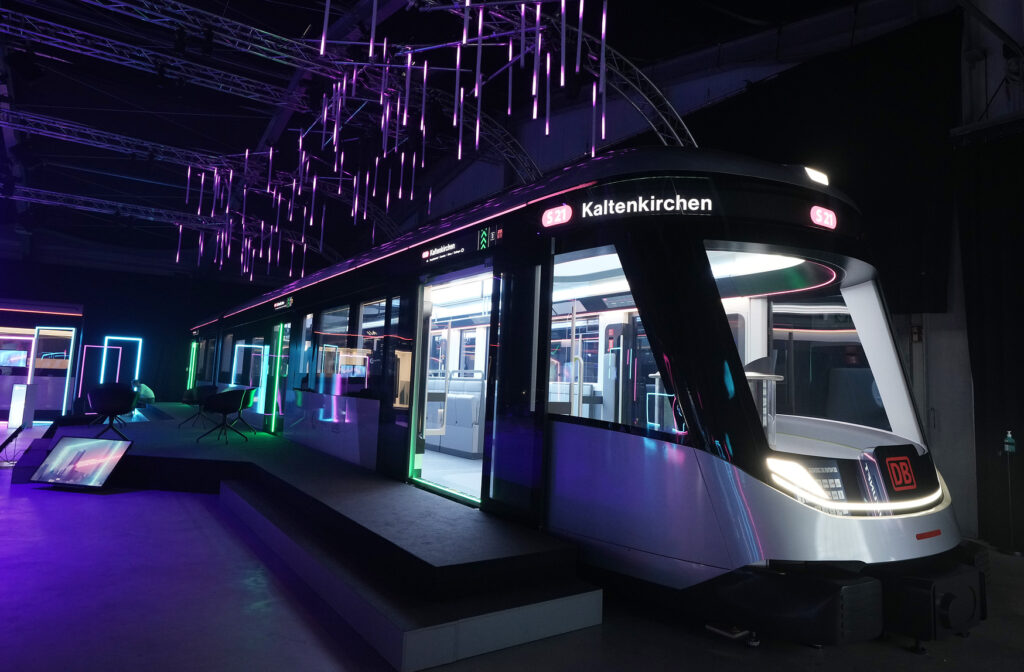
Exterior view of the IdeenzugCity I
© Deutsche Bahn AG / Oliver LangElectric buses
This year again, numerous electric, hydrogen and, for the first time, trolley buses were on display at the bus display. No less than 10 bus manufacturers and one system supplier (Kiepe Electric) were present. Individual buses made their rounds on the outdoor grounds. An overview:
- Škoda Group: H’CITY hydrogen and T’CITY rrolleybus – we reported about Škoda‘s new bus portfolio in the exclusive interview with Germany CEO Tanya Altmann
- Van Hool showed its new Van Hool A12 and a hydrogen bus for Italy
- VDL: Citea LF 122 e-bus
- Kiepe Electric showcased its electrical equipment in a former Sileo articulated e-bus
- Solaris showed the hydrogen articulated bus Solaris hydrogen, which was presented a week earlier in Kraków and which was presented in detail here
- Ebusco showed its innovative Ebusco 3.0
- Cegelec showed a new SOR-based trolleybus with new drive equipment in Hall 17
- Otokar exhibited the already known e-Kent C on the outdoor area
- K-Bus showed an electric and above all comfortable minibus for Austria
- Atlas Novus from Lithuania showed the Cityline/ Ecoline minibus based on the Mercedes Sprinter
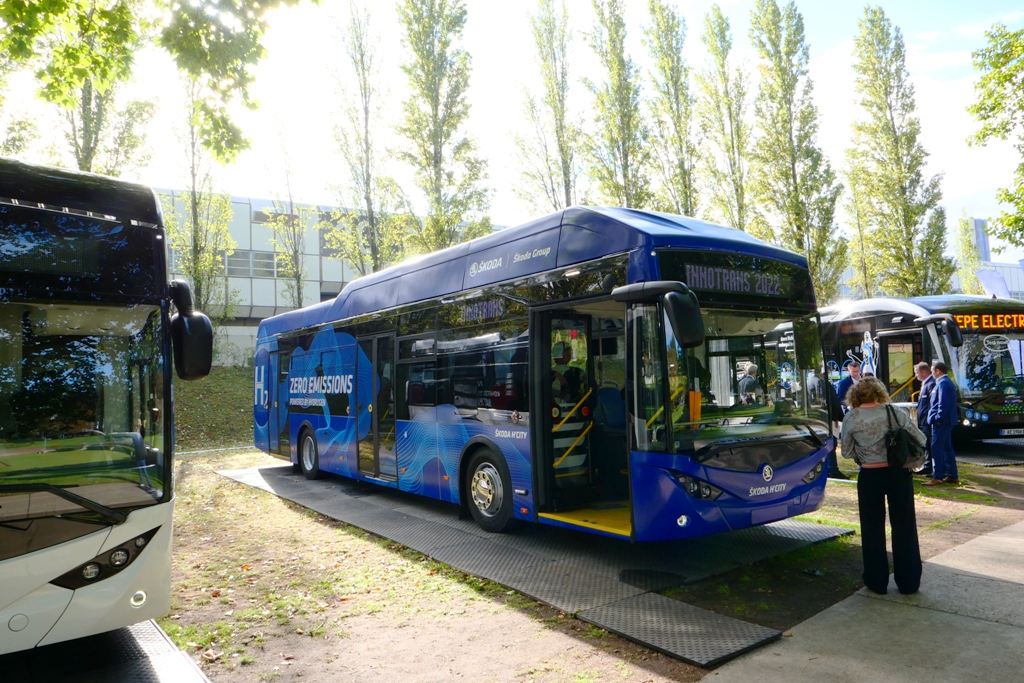
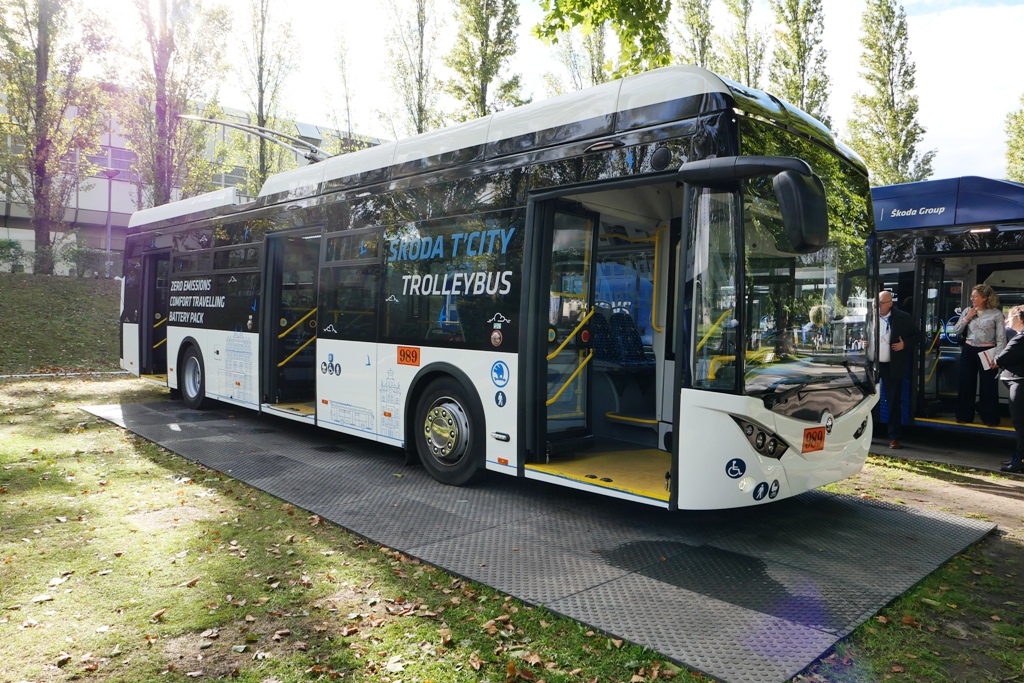
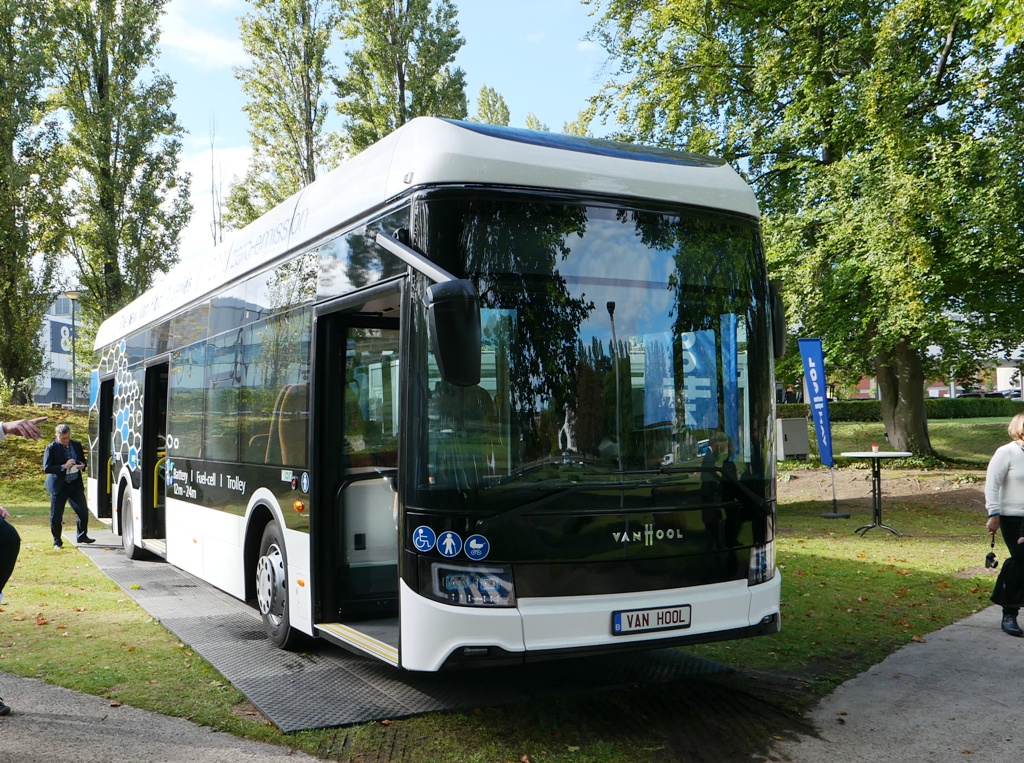
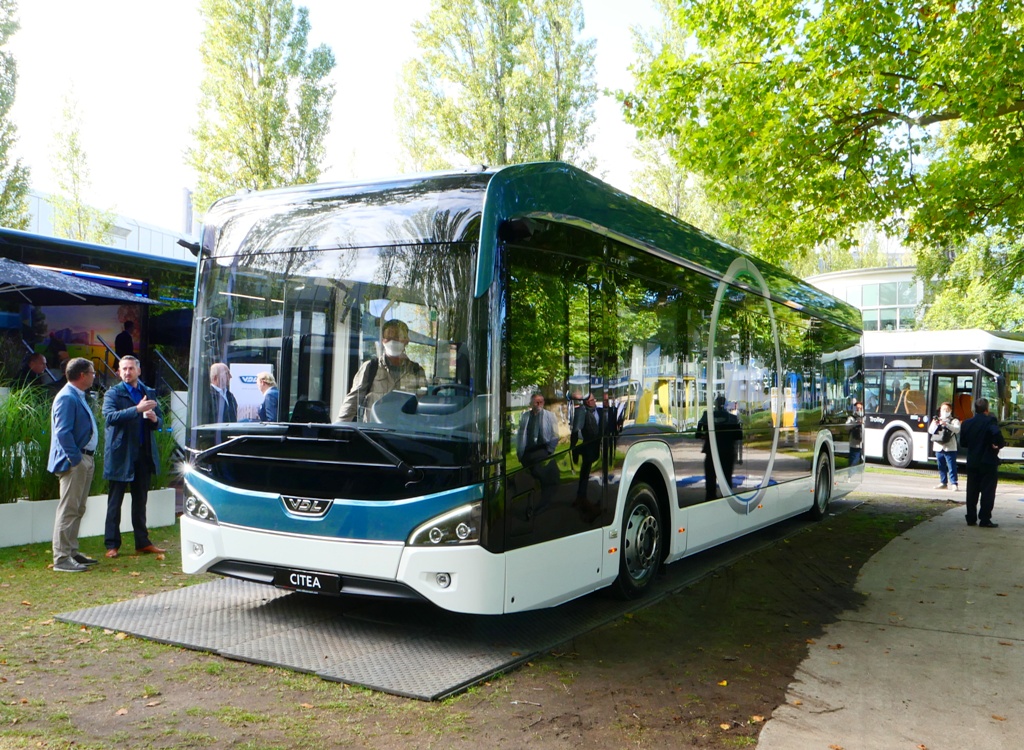
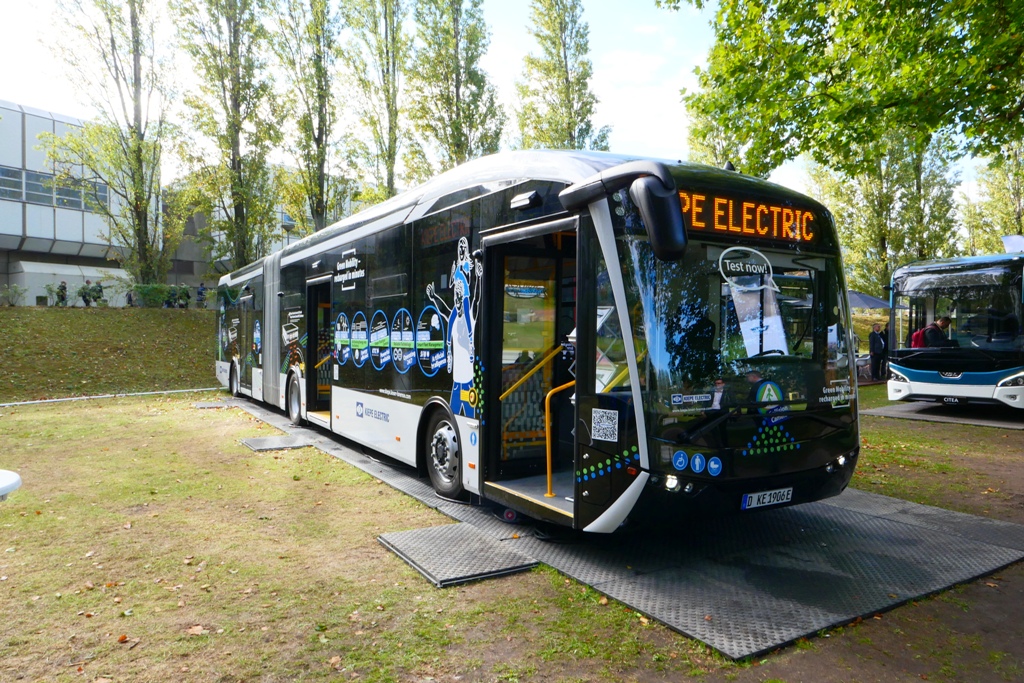
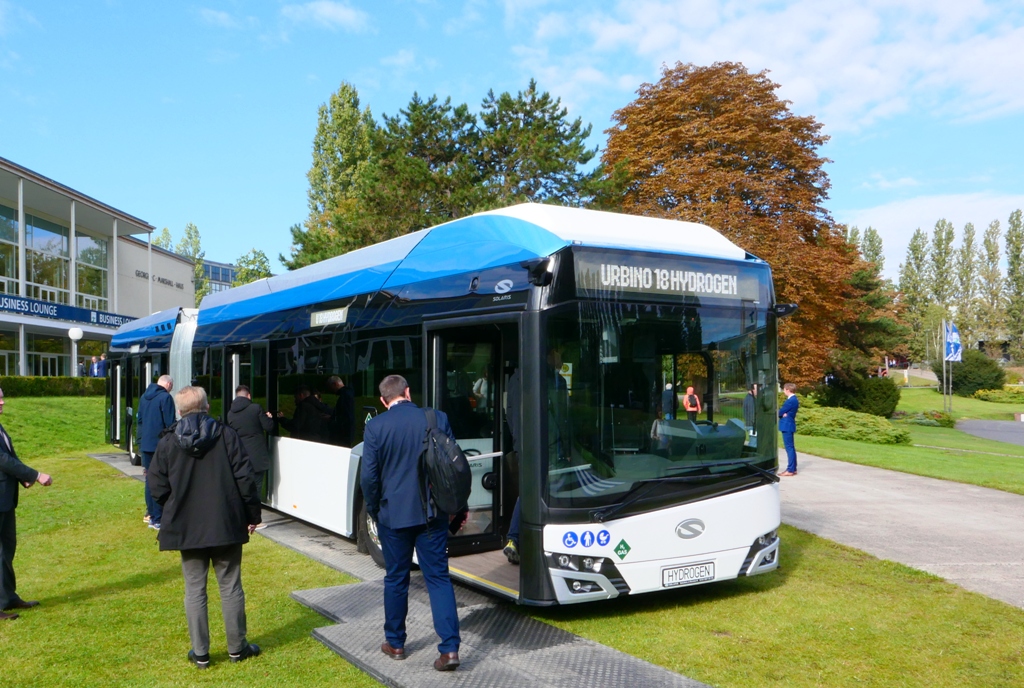
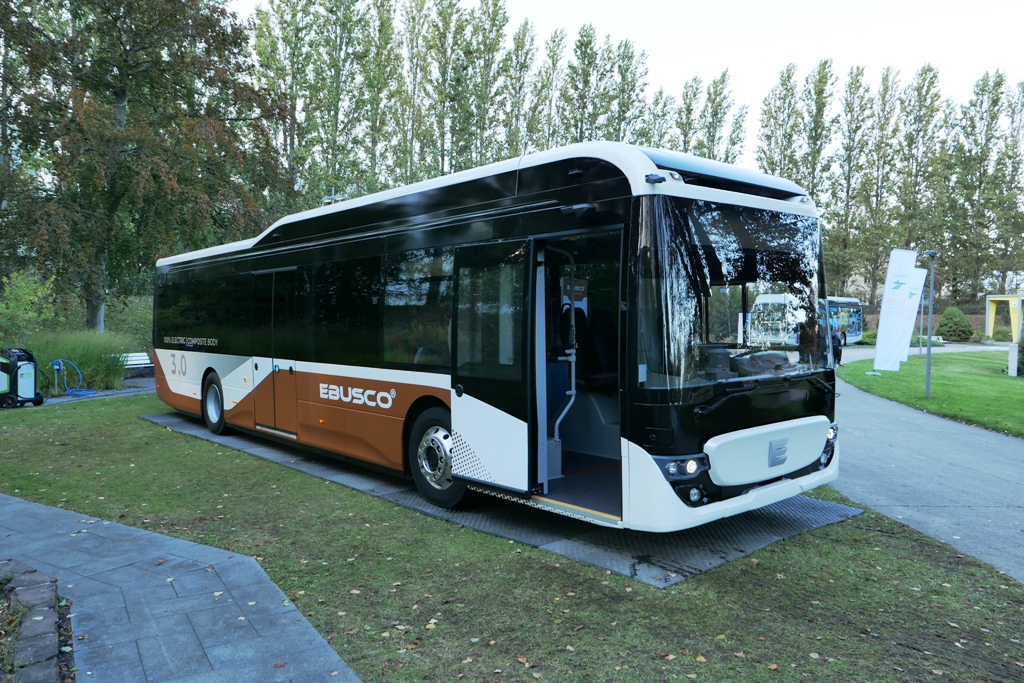
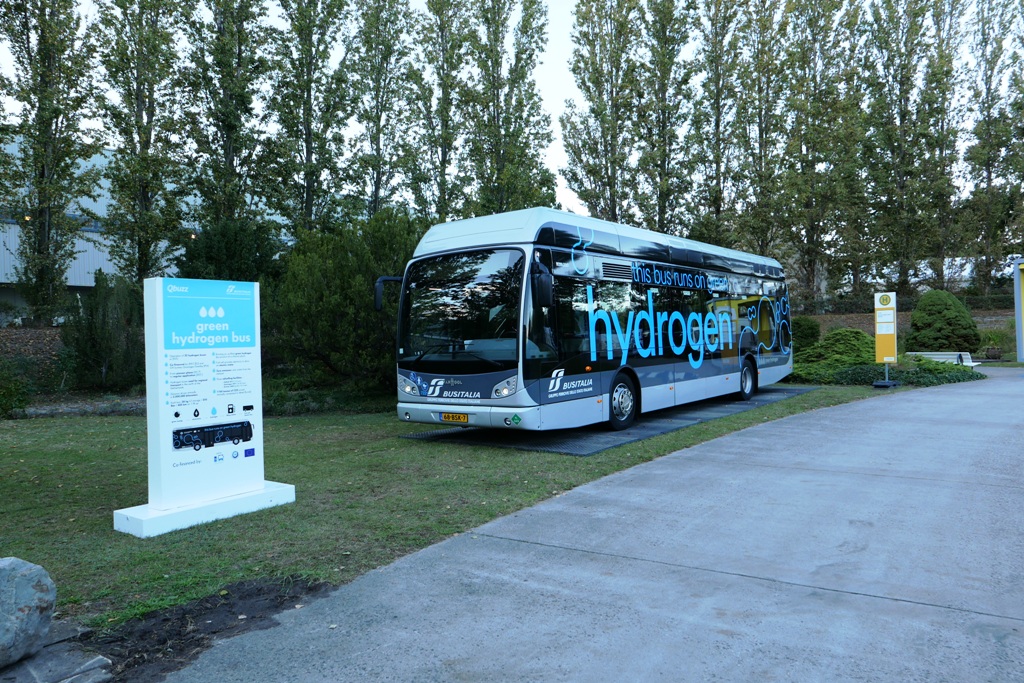
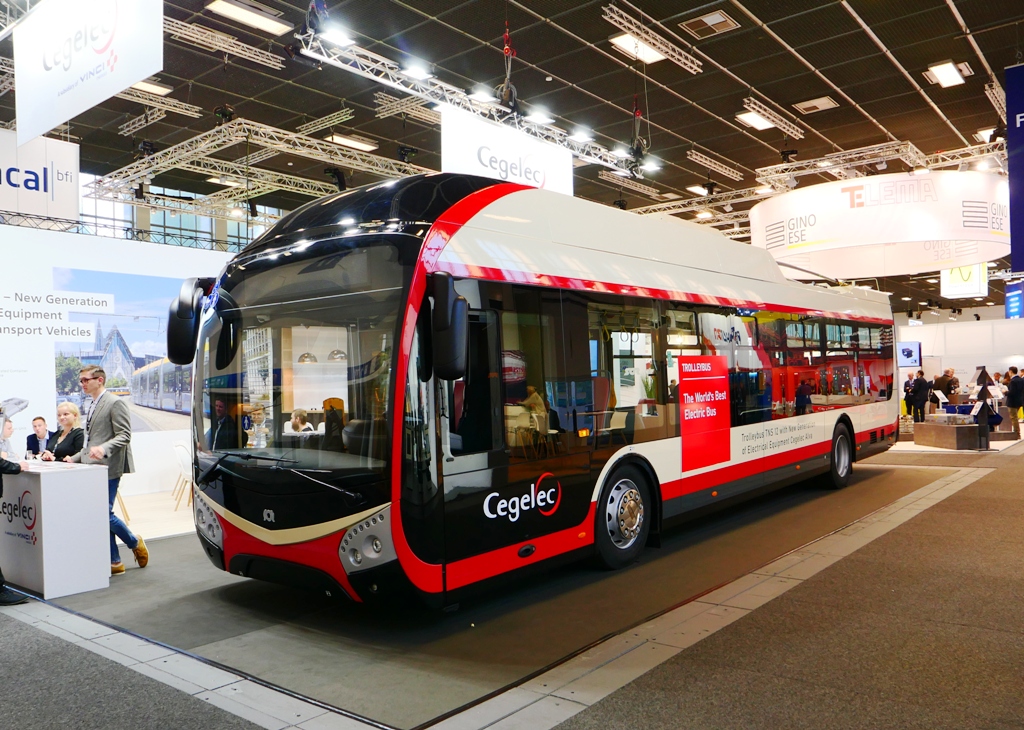
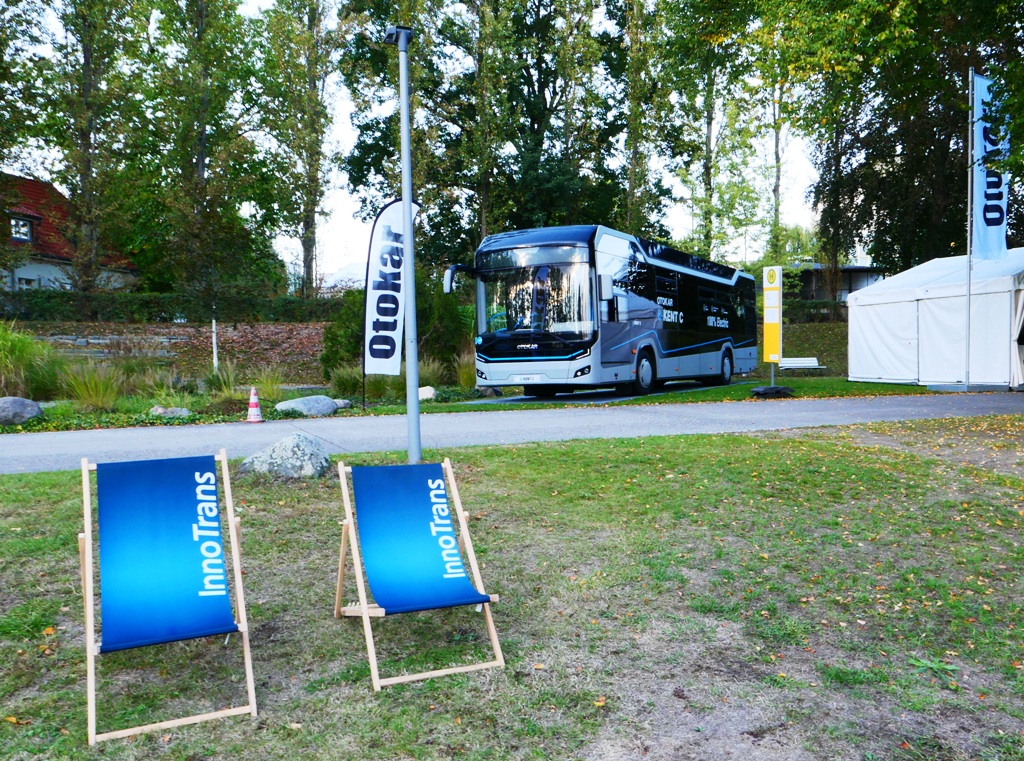
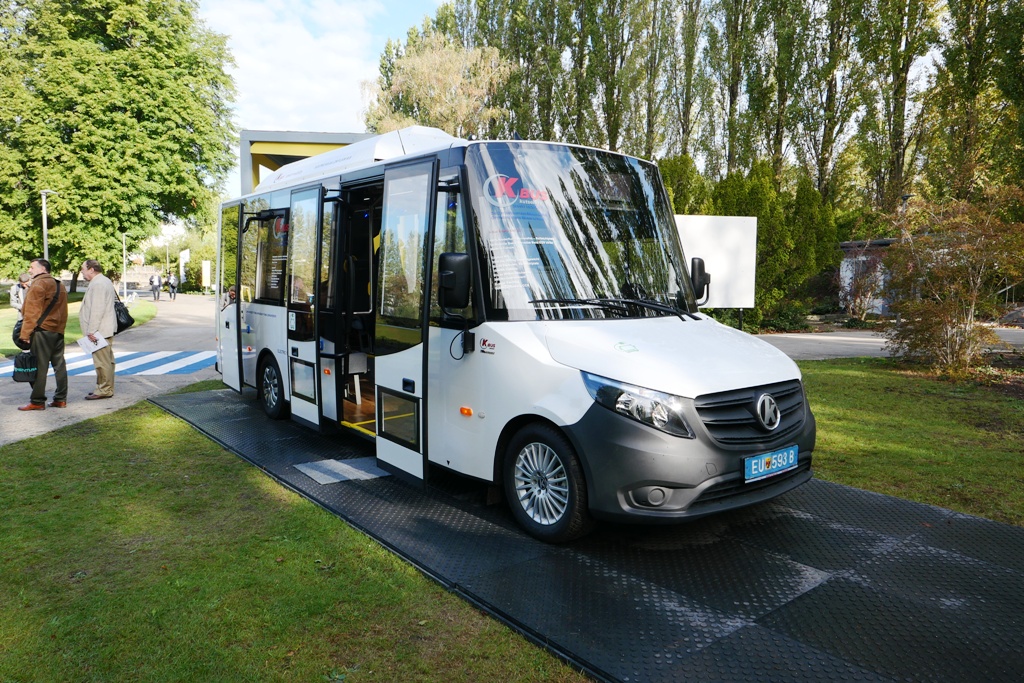
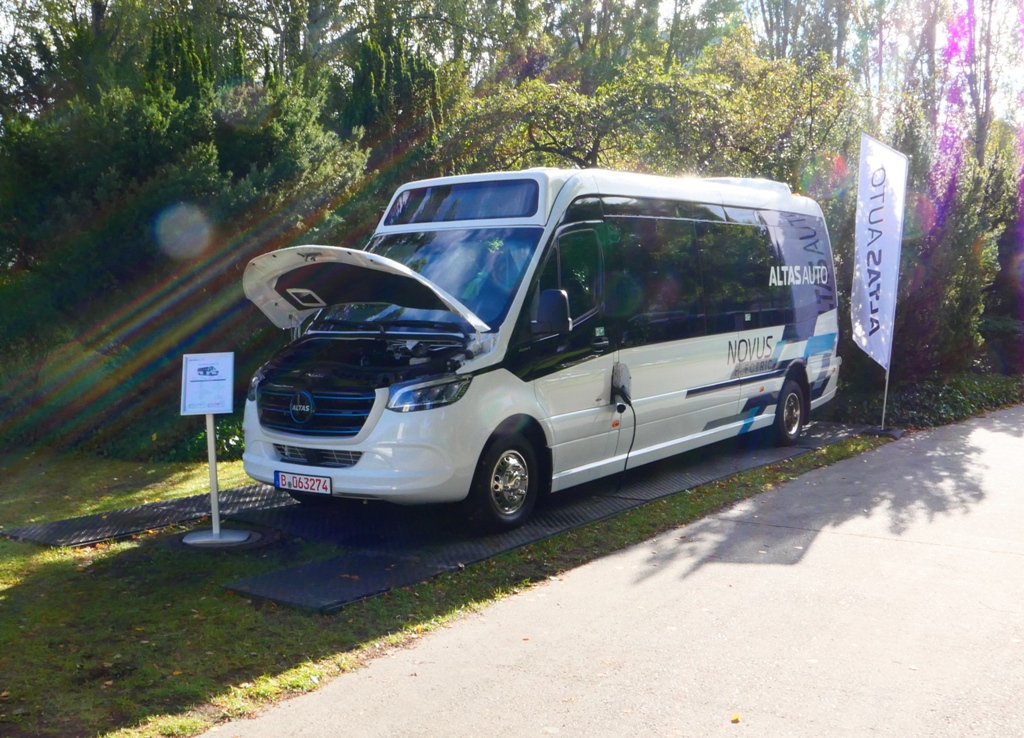
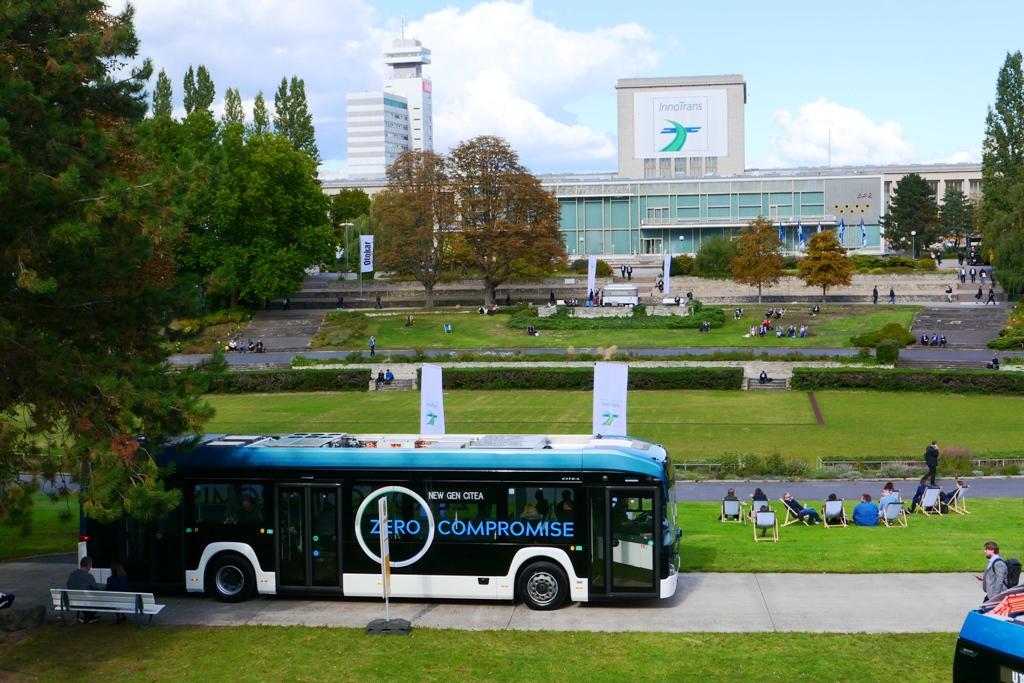
Systems and special vehicles
Numerous special vehicles and innovative system solutions were on display both in the outdoor area and in the halls. On the outdoor area of InnoTrans, Plasser & Theurer presented the Unimat 09-4×4/4S Dynamic E3, the new all-in-one tamping machine with climate-friendly drive technology for DB Bahnbau Gruppe GmbH. The Unimat 09-4×4/4S Dynamic E3 is in fact the first E³ hybrid machine for Germany. It can travel emission-free on green traction current. With a transfer speed of 100 km/h, it quickly reaches construction sites in urban areas and tunnels, but also on heavy-duty lines, where it shows off its advantages as a true all-in-one machine. With its electrically driven 1-sleeper tamping unit, it can continuously process both lines and turnouts. Maximum flexibility in the turnout is provided by the variably applicable 16 tamping picks, the 3-strand lifting and the 4-strand tamping technology. In addition, the Dynamic Track Stabiliser DGS and the trailer with sweeping device ensure a perfect finish after tamping.
Windhoff showed the Venus NV type GAF work car for trams and light railways and the two-axle RL60 AEM shunting locomotive. On the occasion of InnoTrans, Frankfurt’s VGF ordered two new rail grinding vehicles. VGF and Windhoff signed the contract on Wednesday, 21 September, at Innotrans in Berlin. Delivery of the first vehicle is scheduled for August 2024, with the second vehicle due in Frankfurt at the end of September 2024. VGF plans to put the vehicle into service at the beginning of 2025, when the old grinding train will be replaced.
In the exhibition halls, the industry presented the latest developments in vehicle technology, drives, interiors, passenger information, infrastructure and passenger information. Two main drivers are dominating the market. The reduction of energy consumption, through the usage of more efficient and “green” components and light-weight structures. The second one being digitalisation in virtually all product sectors: digital interfaces between vehicle and passenger or between vehicle, operator and maintainer are intended to simplify operations, operational processes and ticketing and give rise to new business models. The developments in the direction of autonomous driving for mainline railways are exciting. We can already look forward to the next steps and the upcoming InnoTrans!
